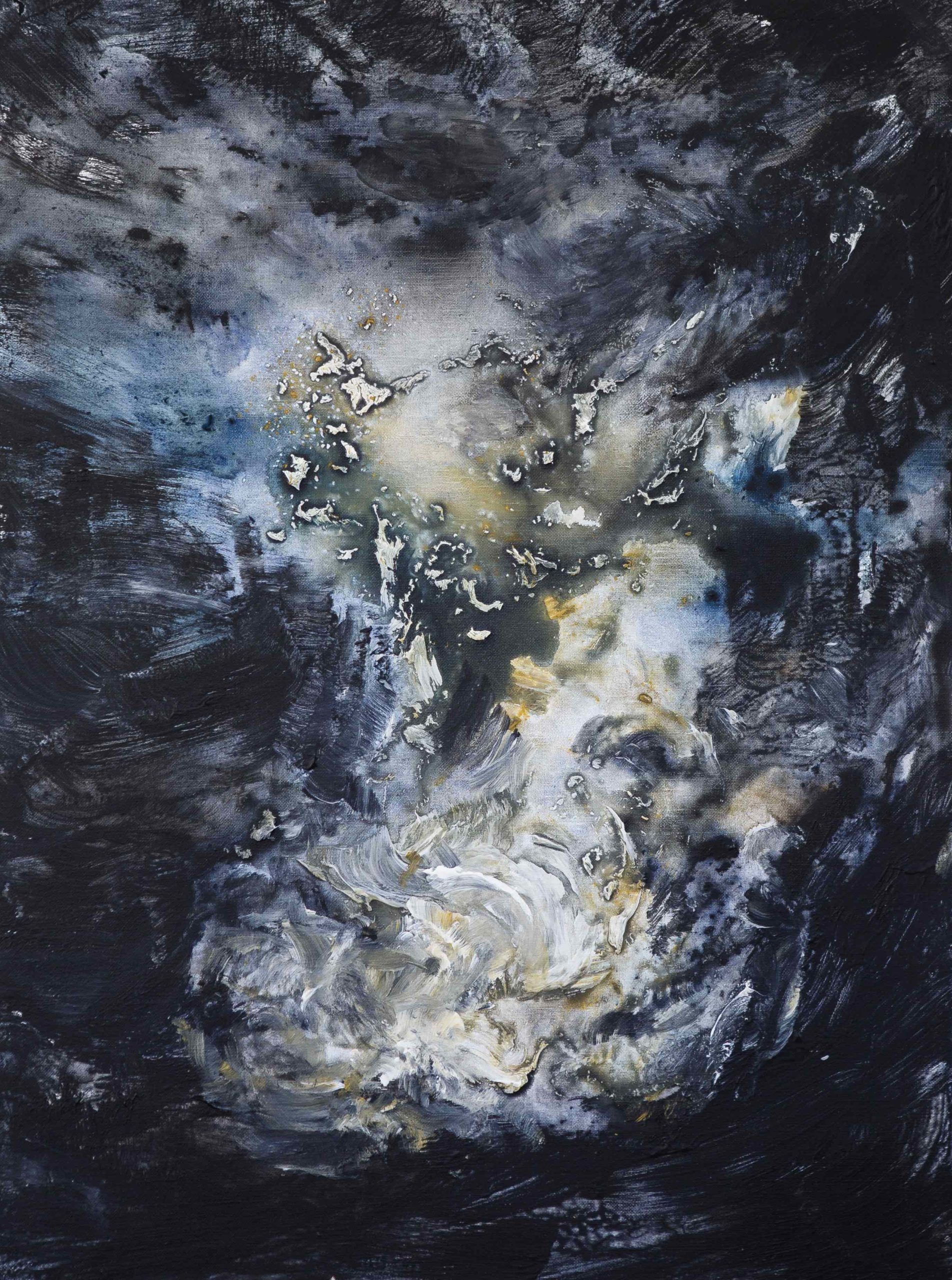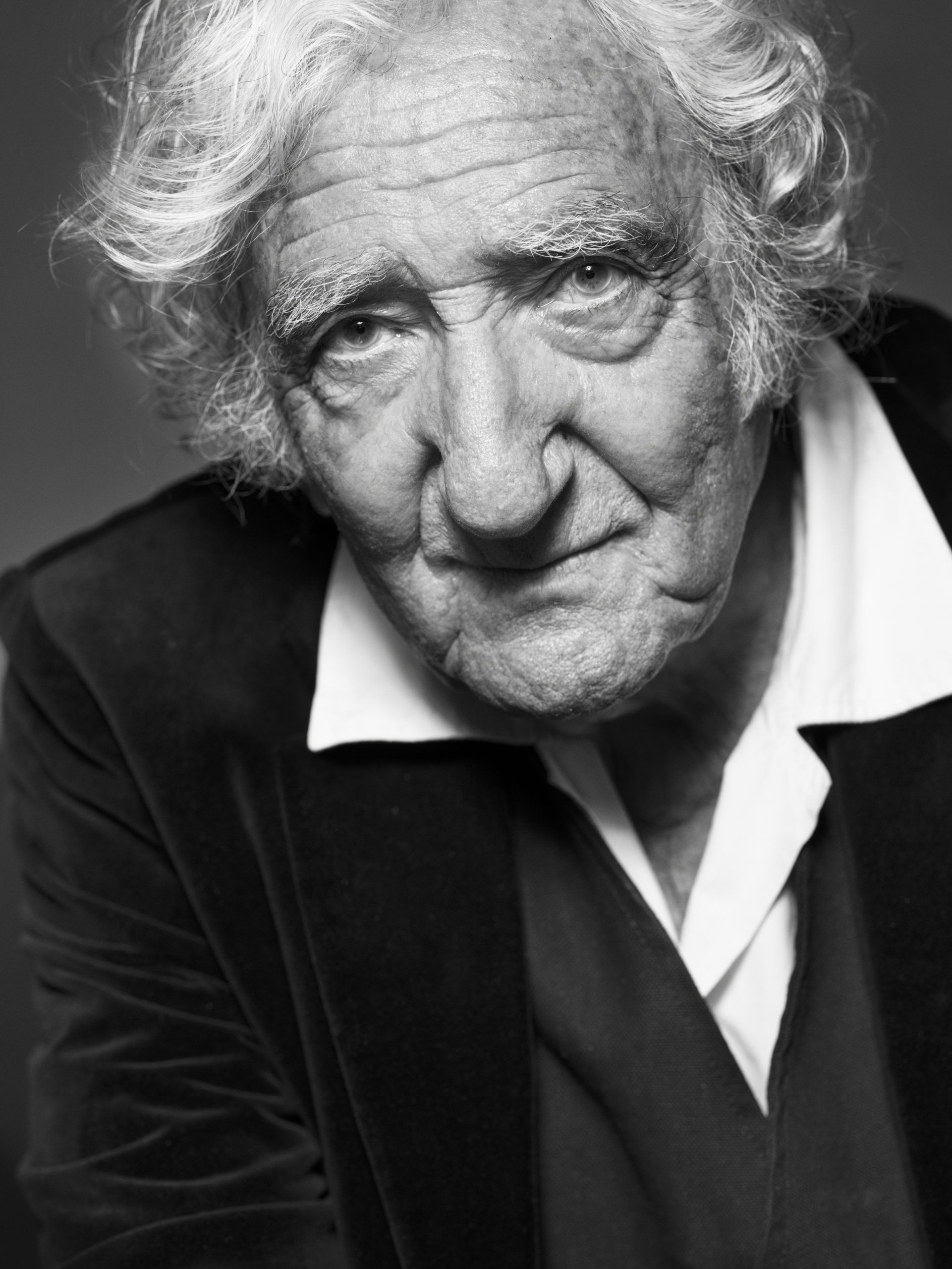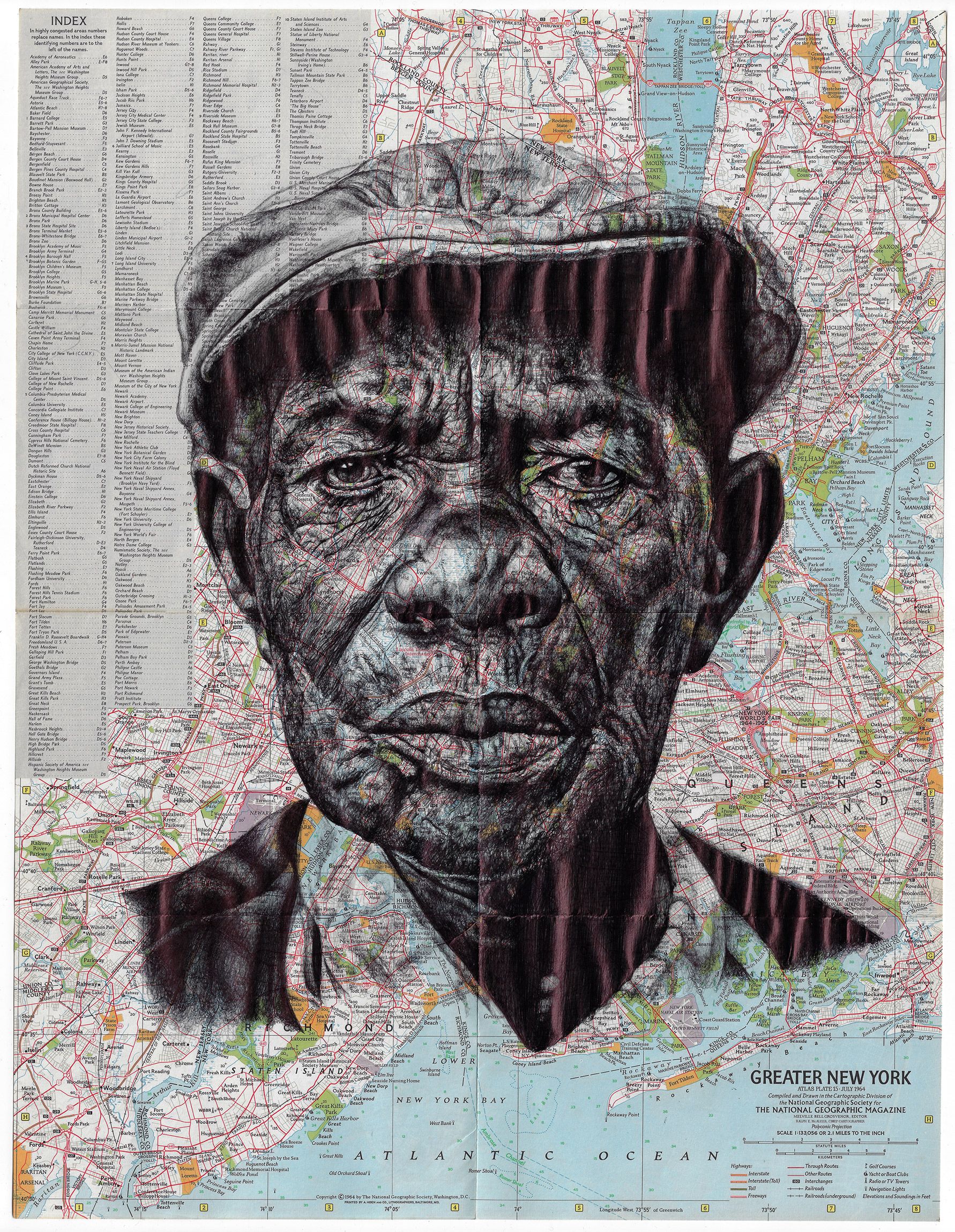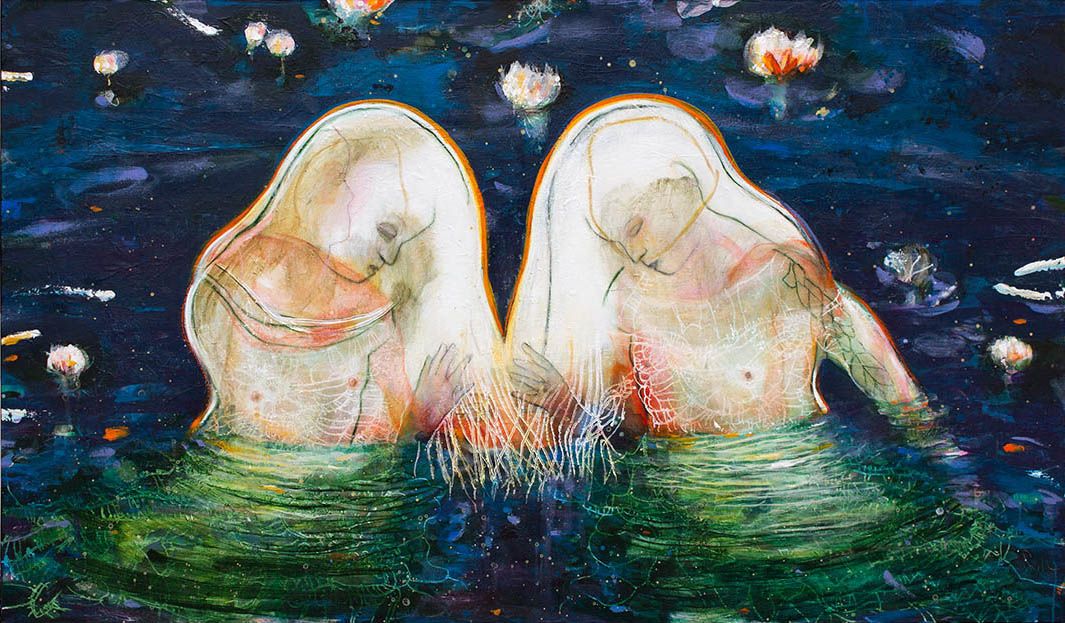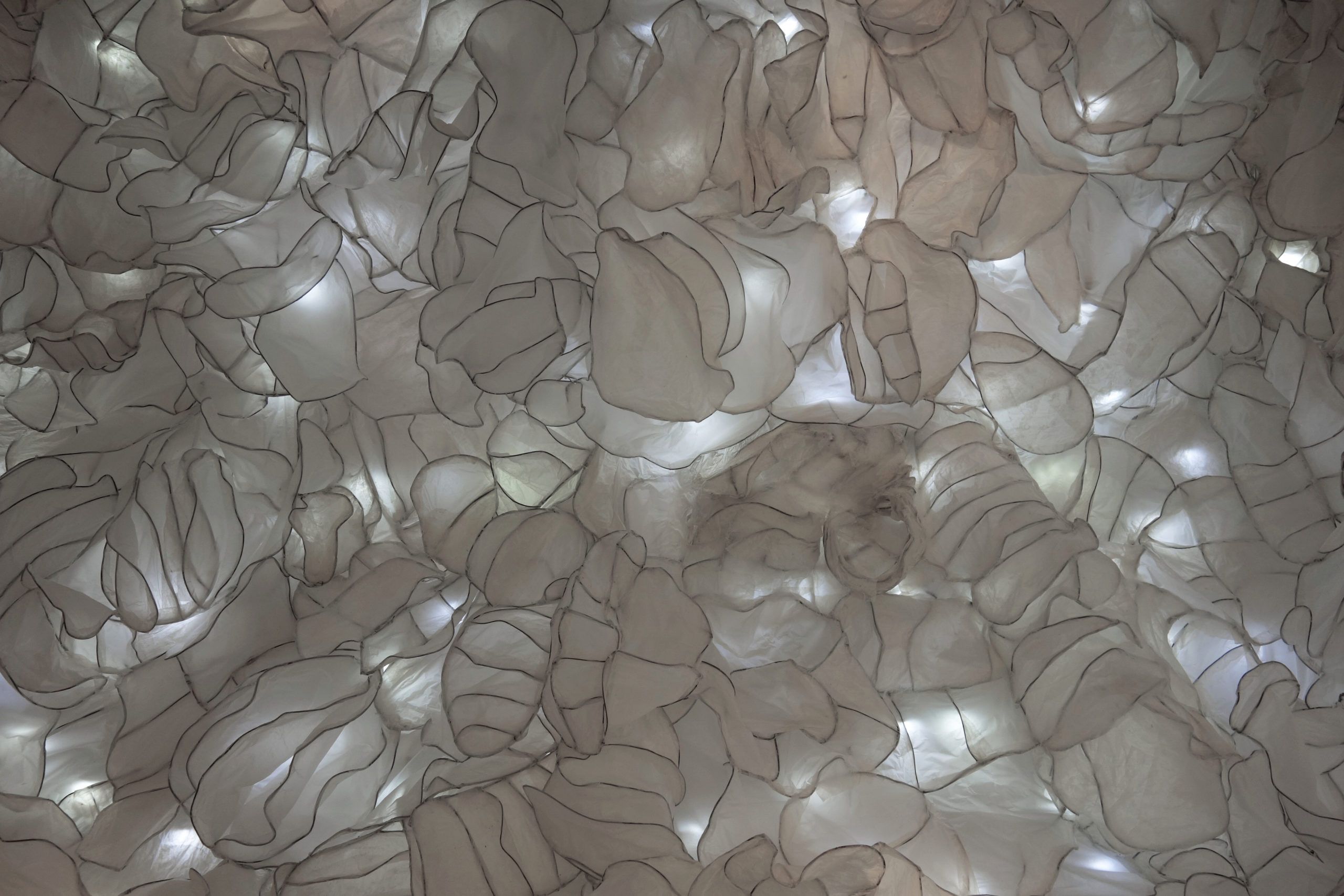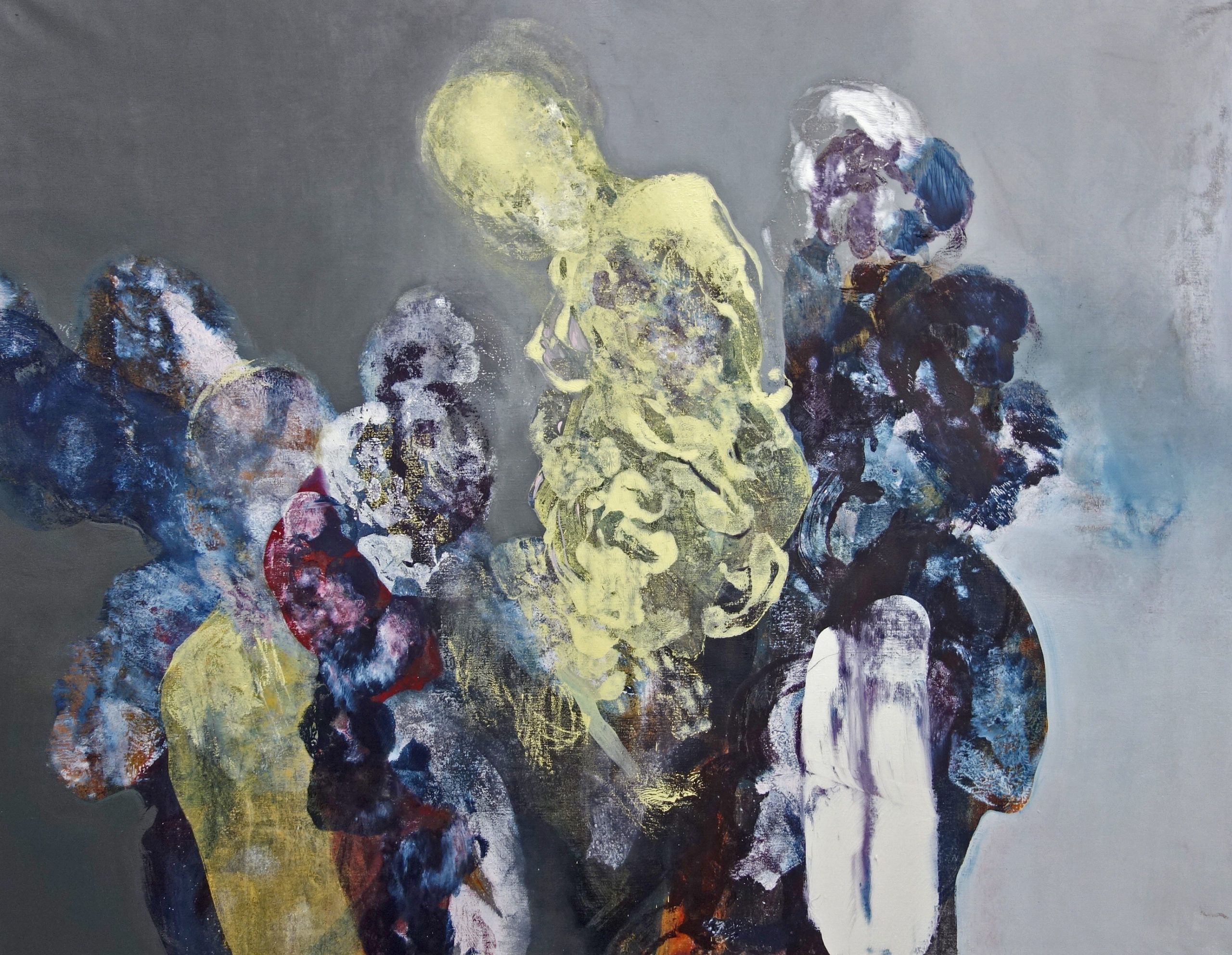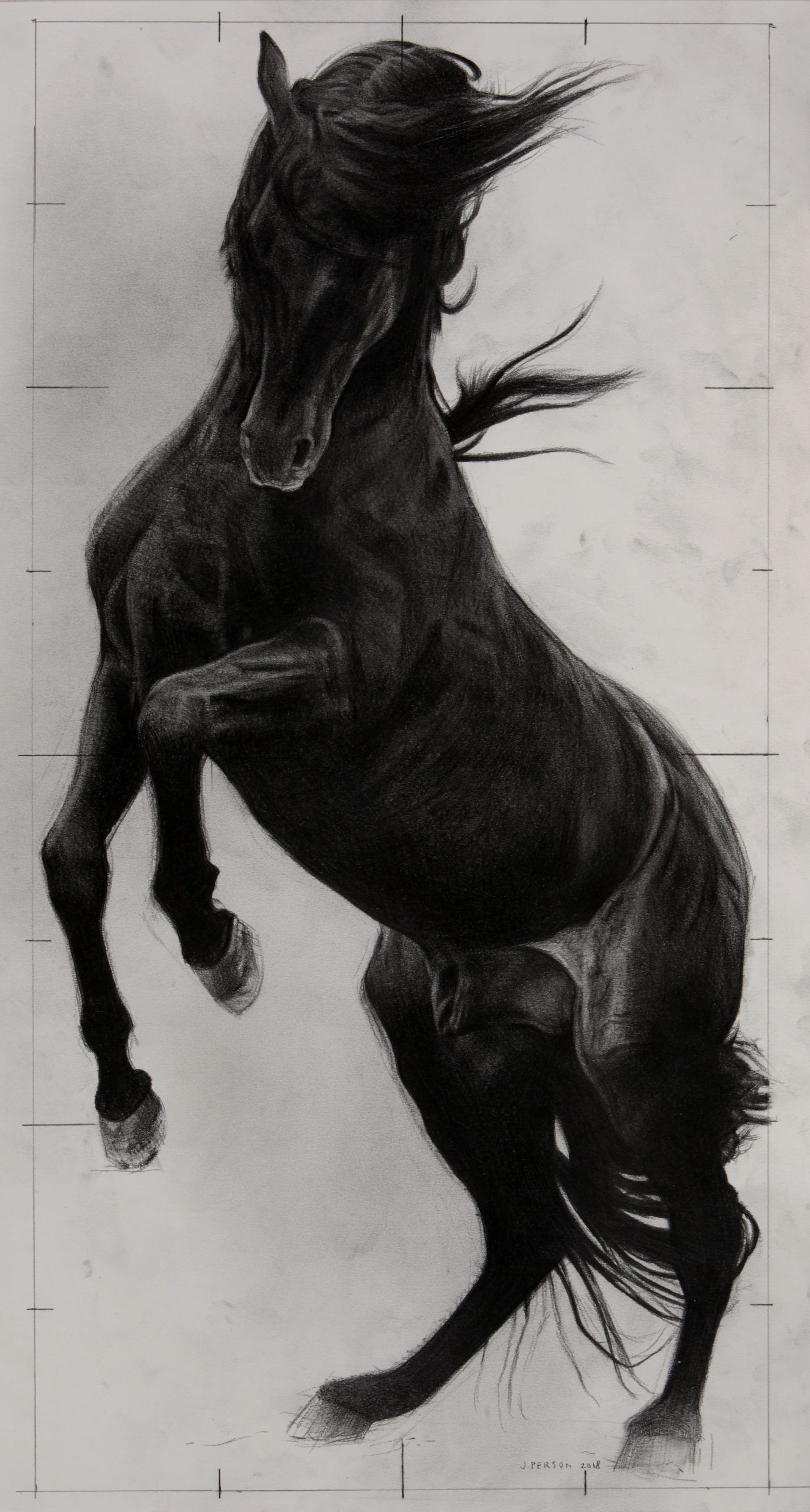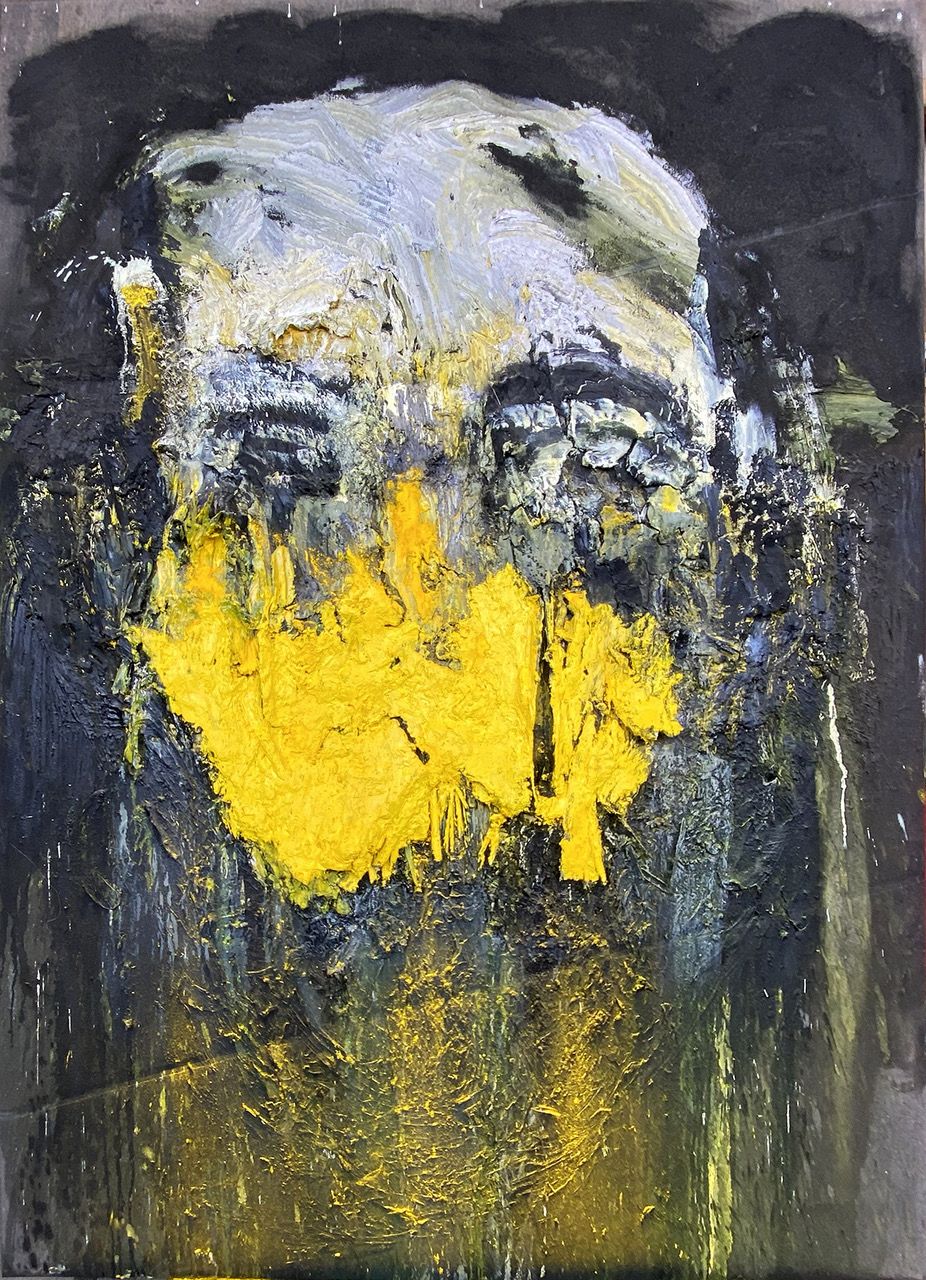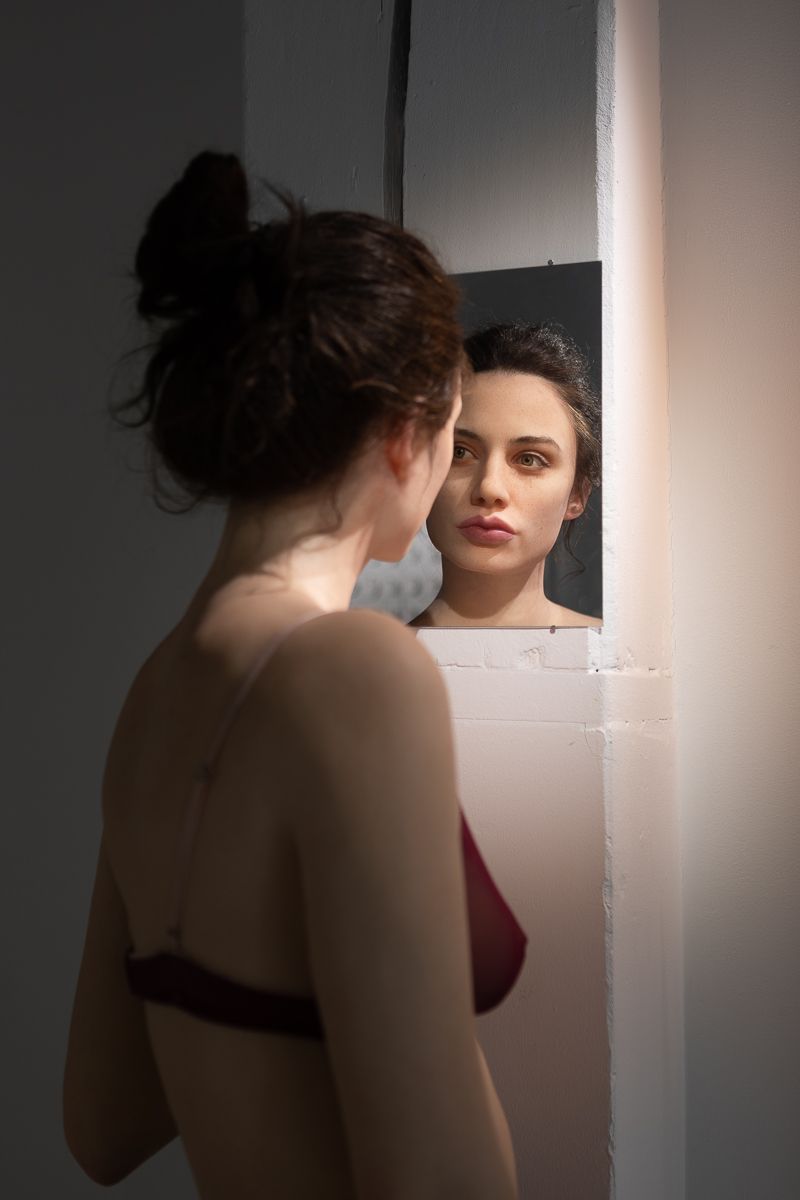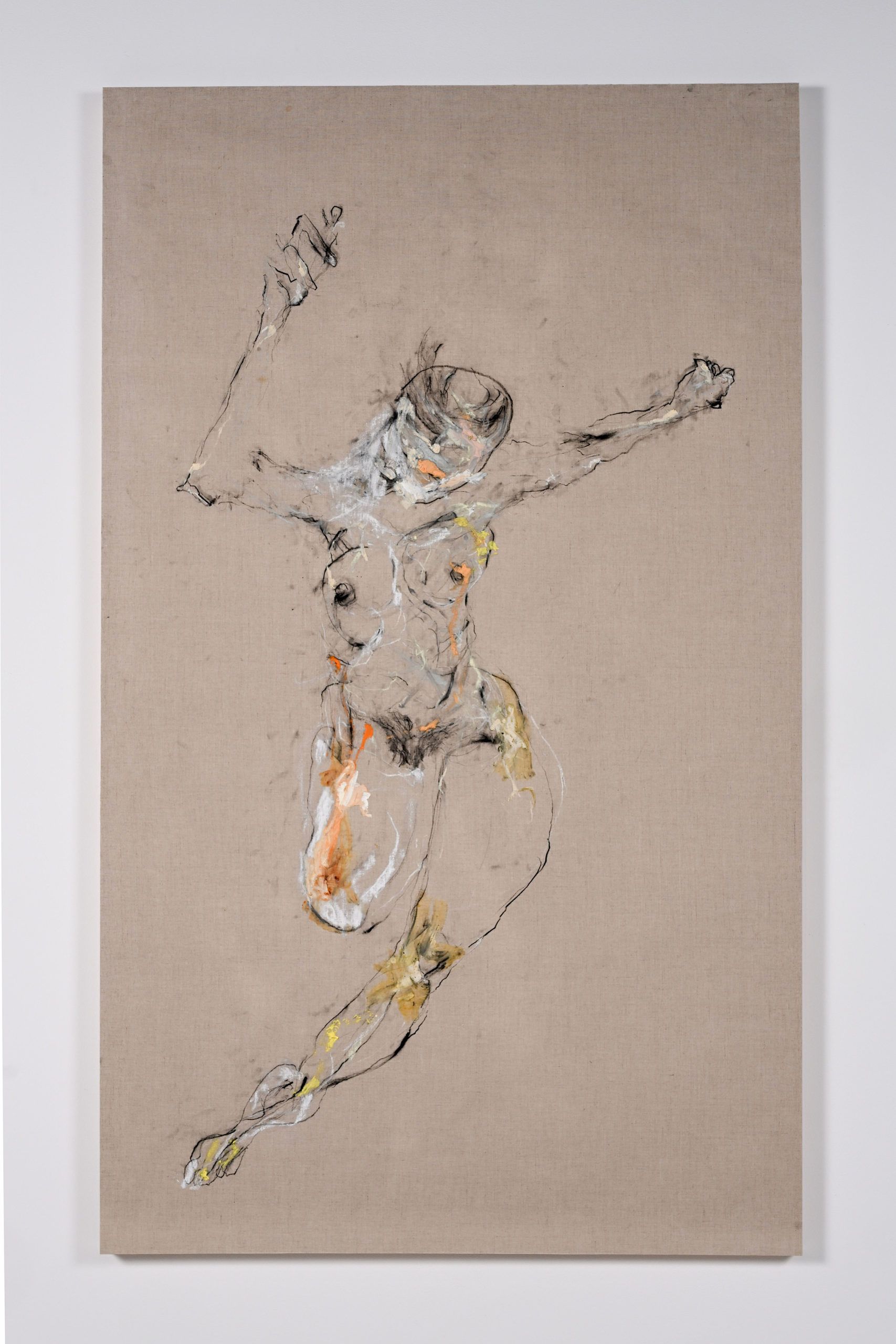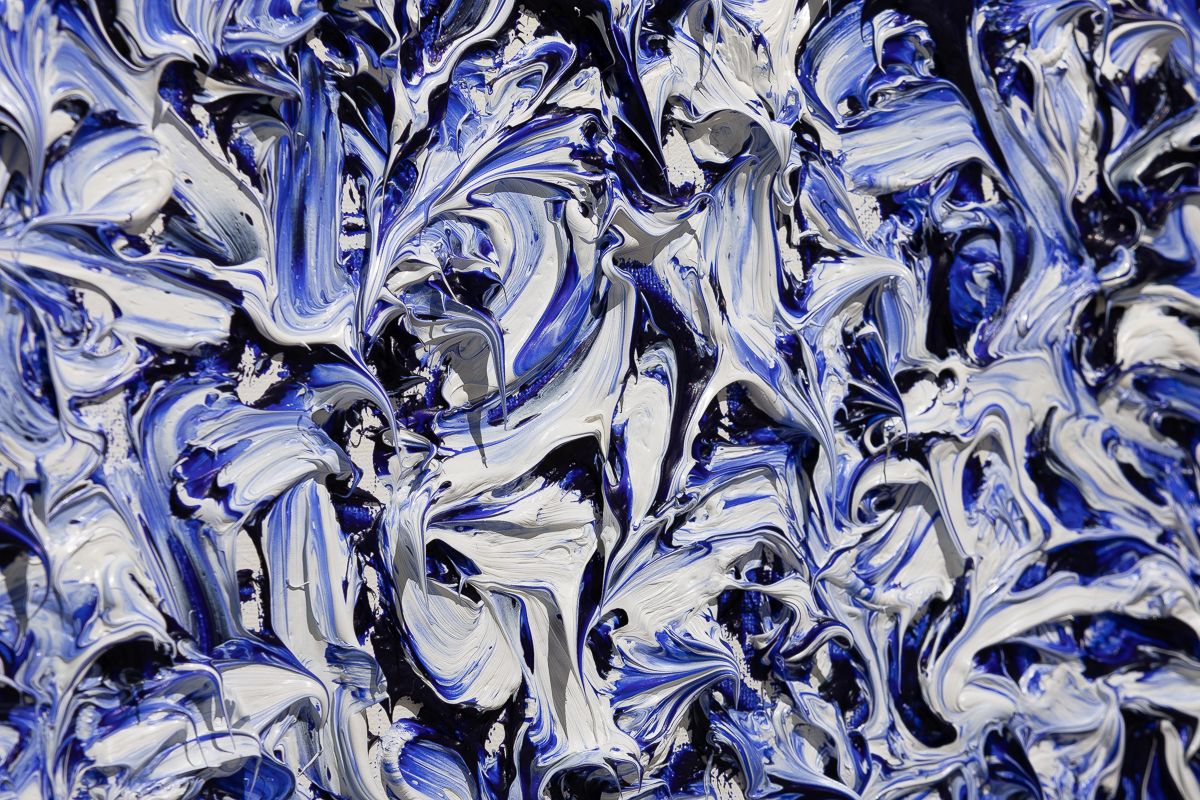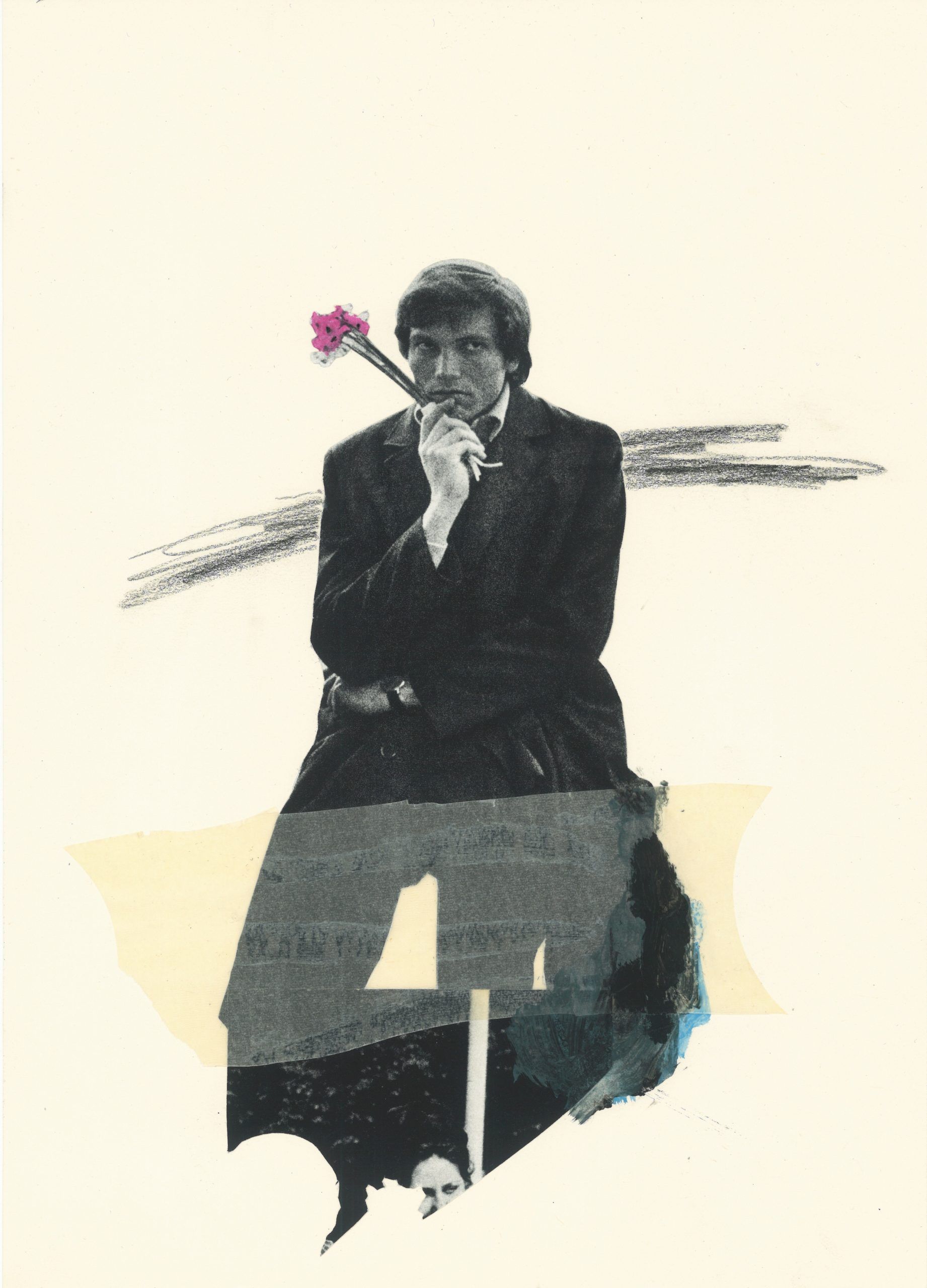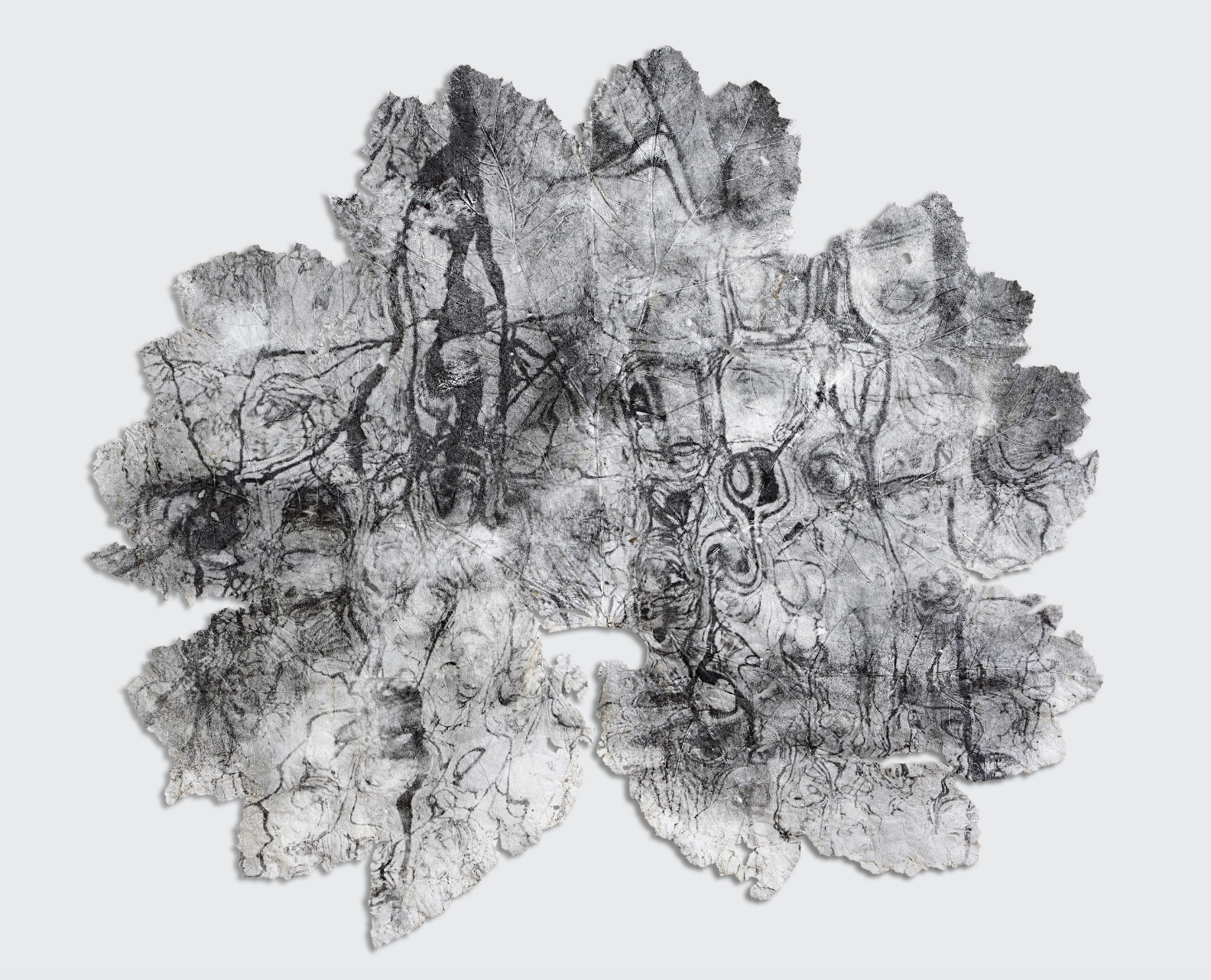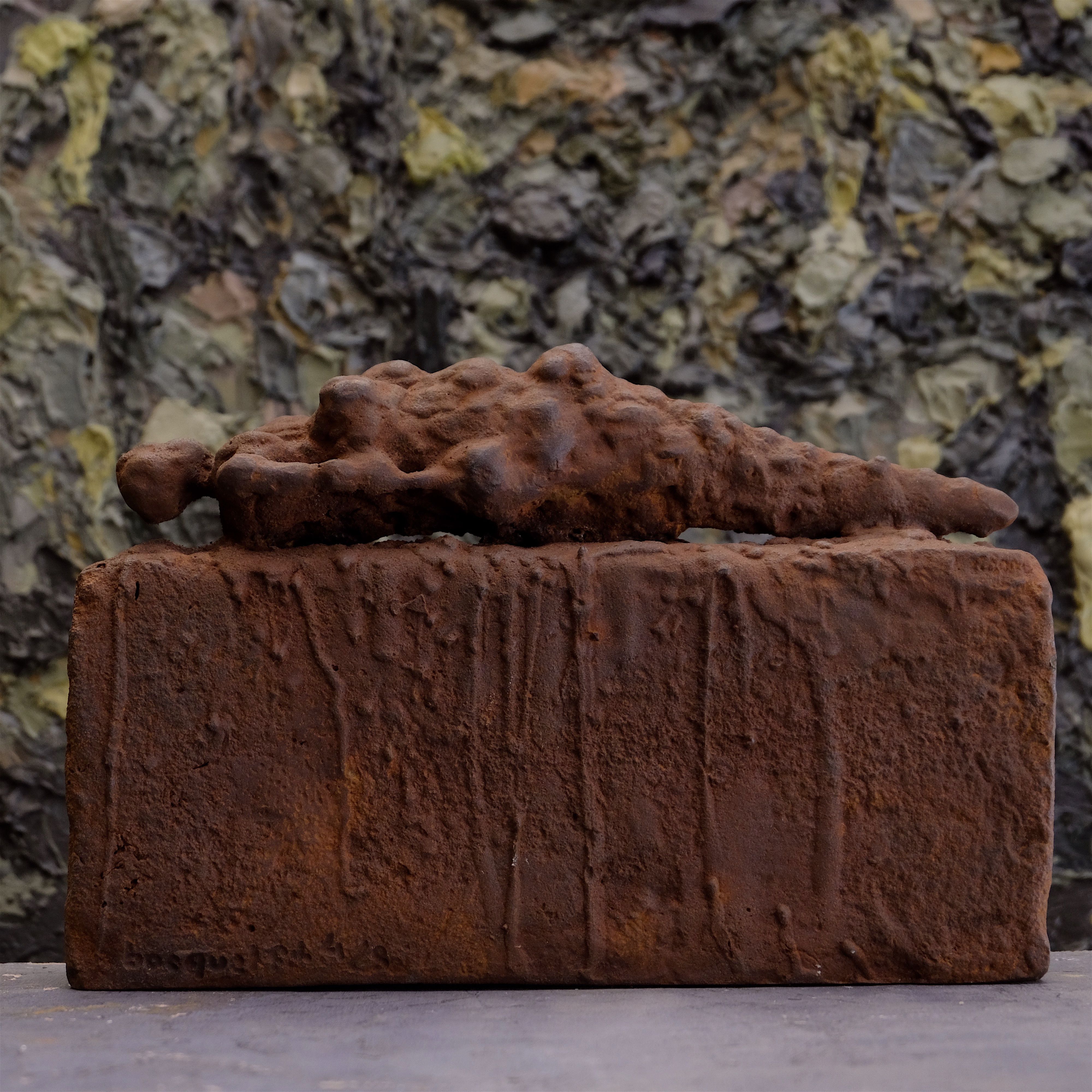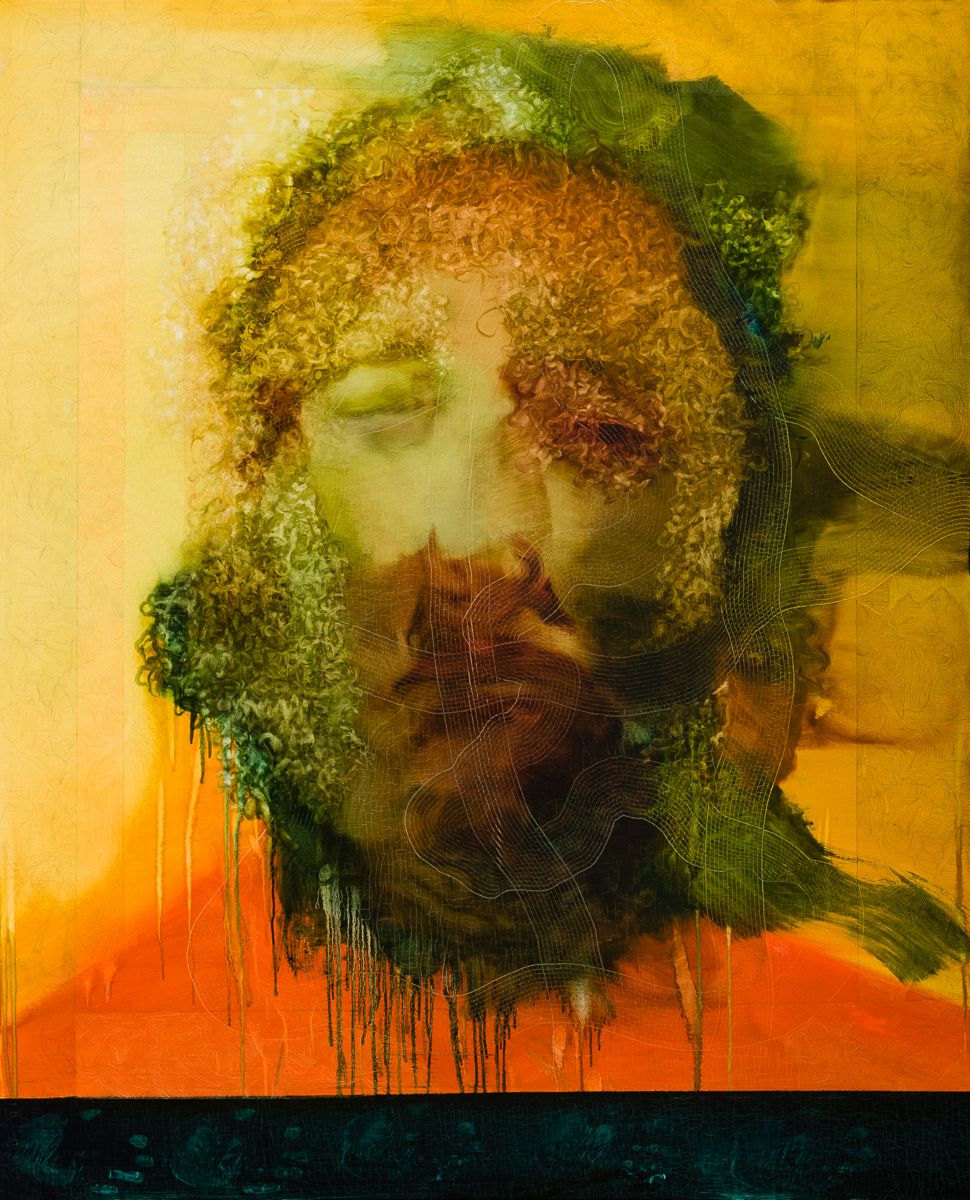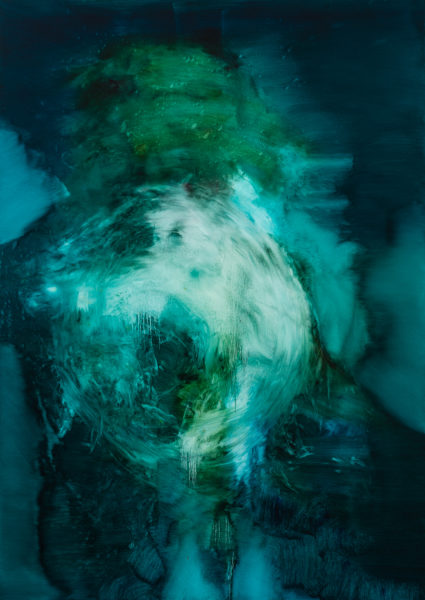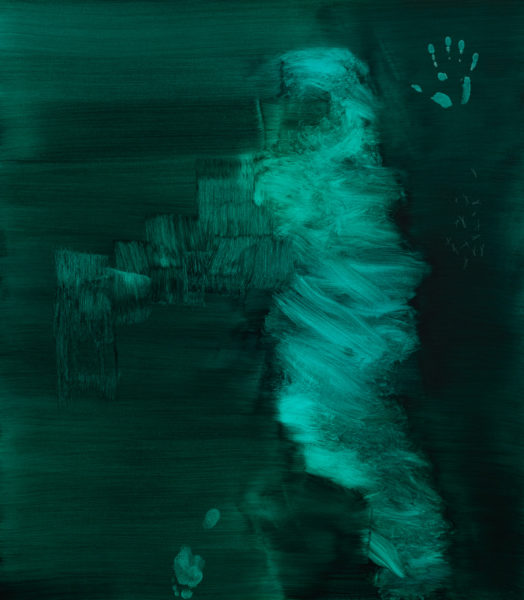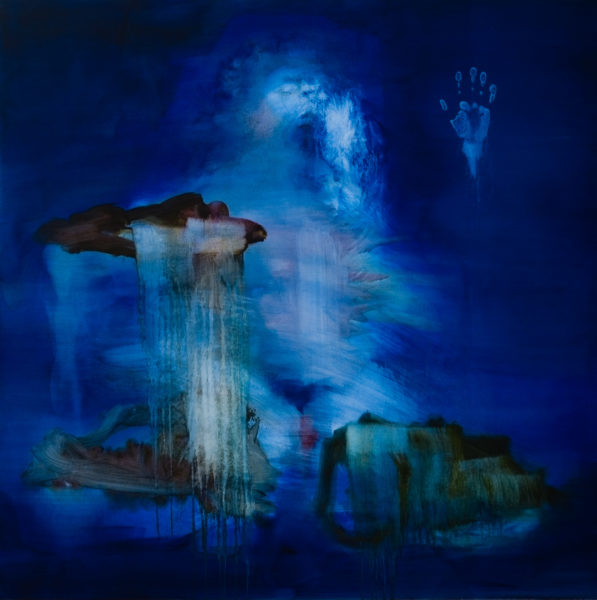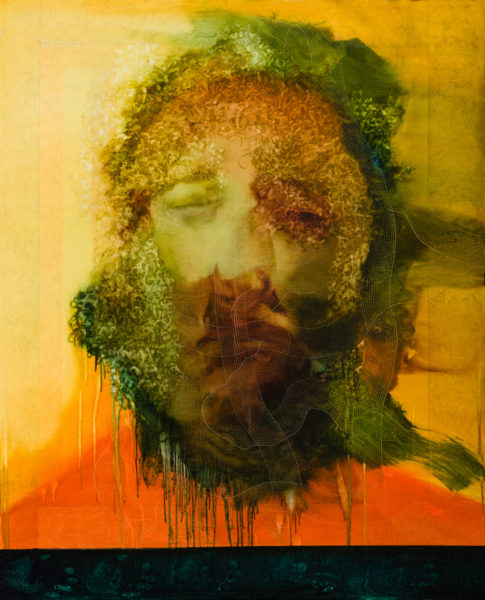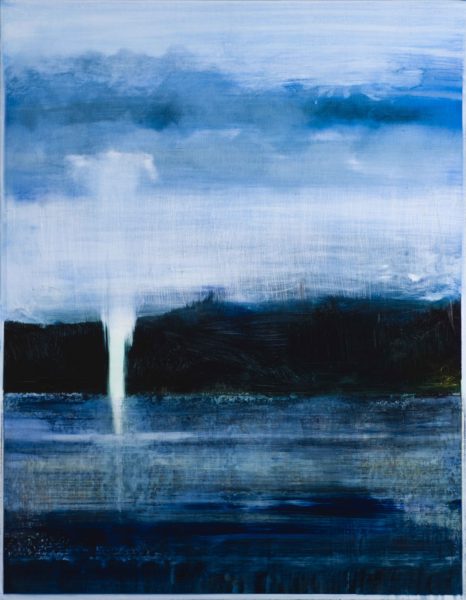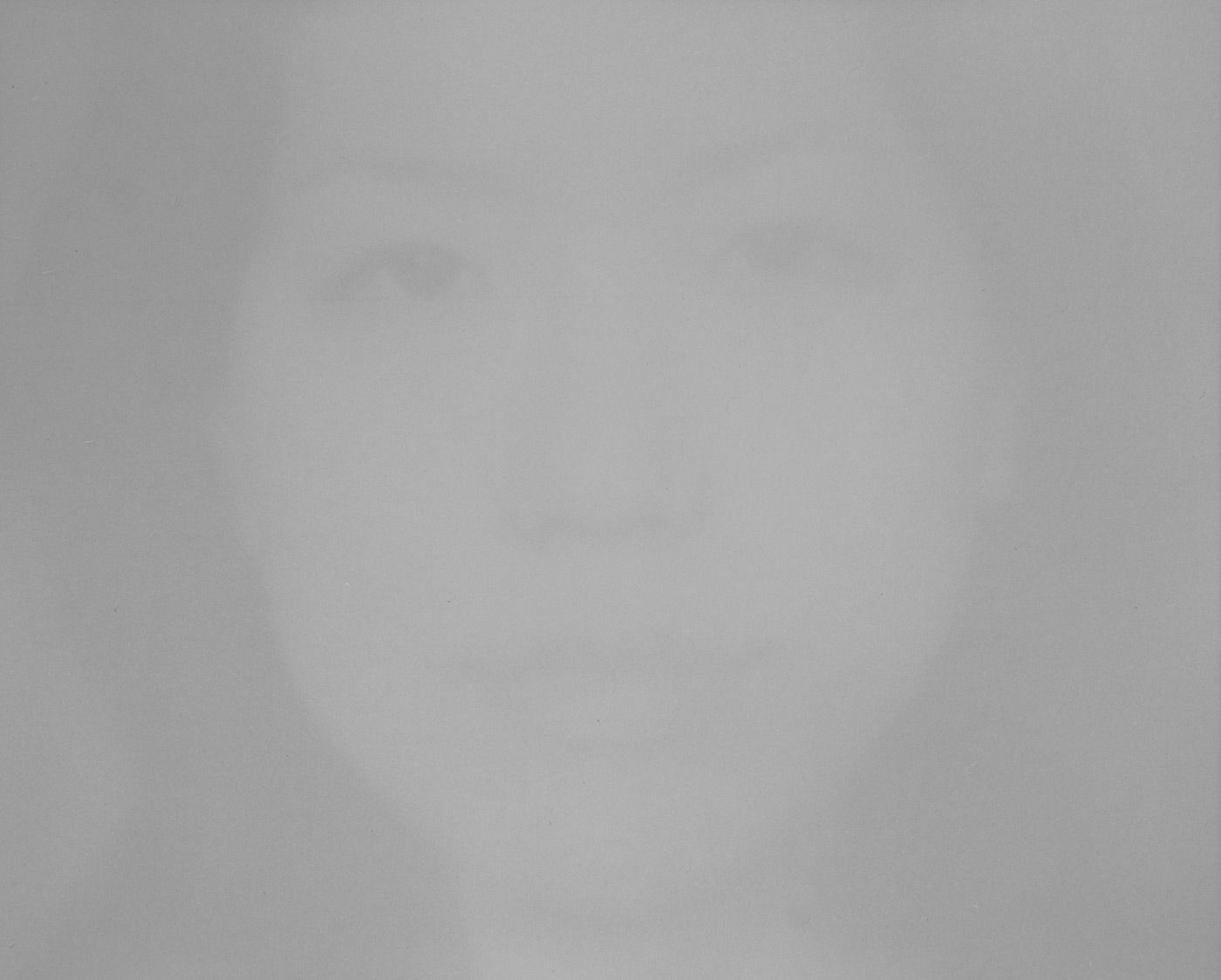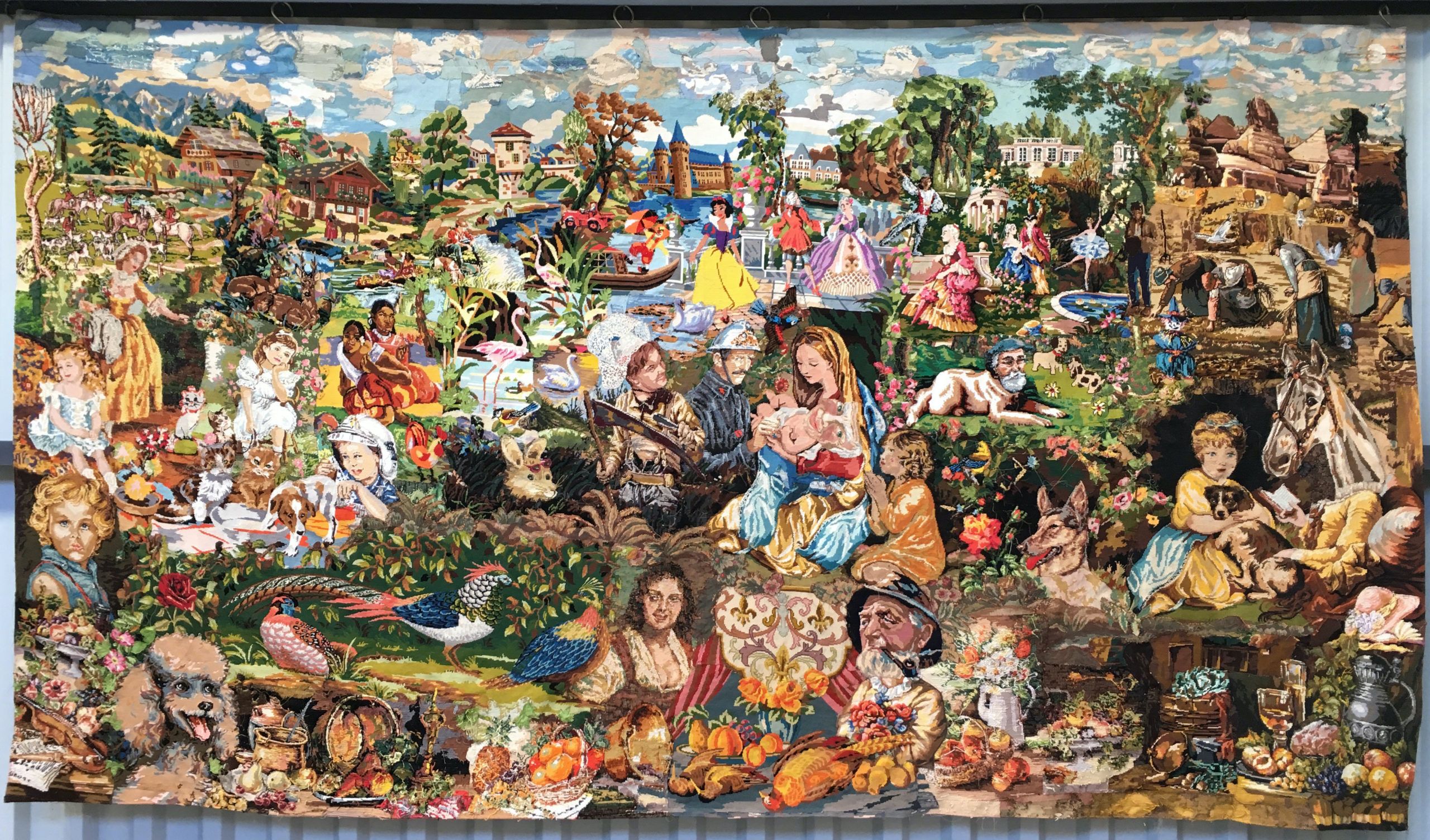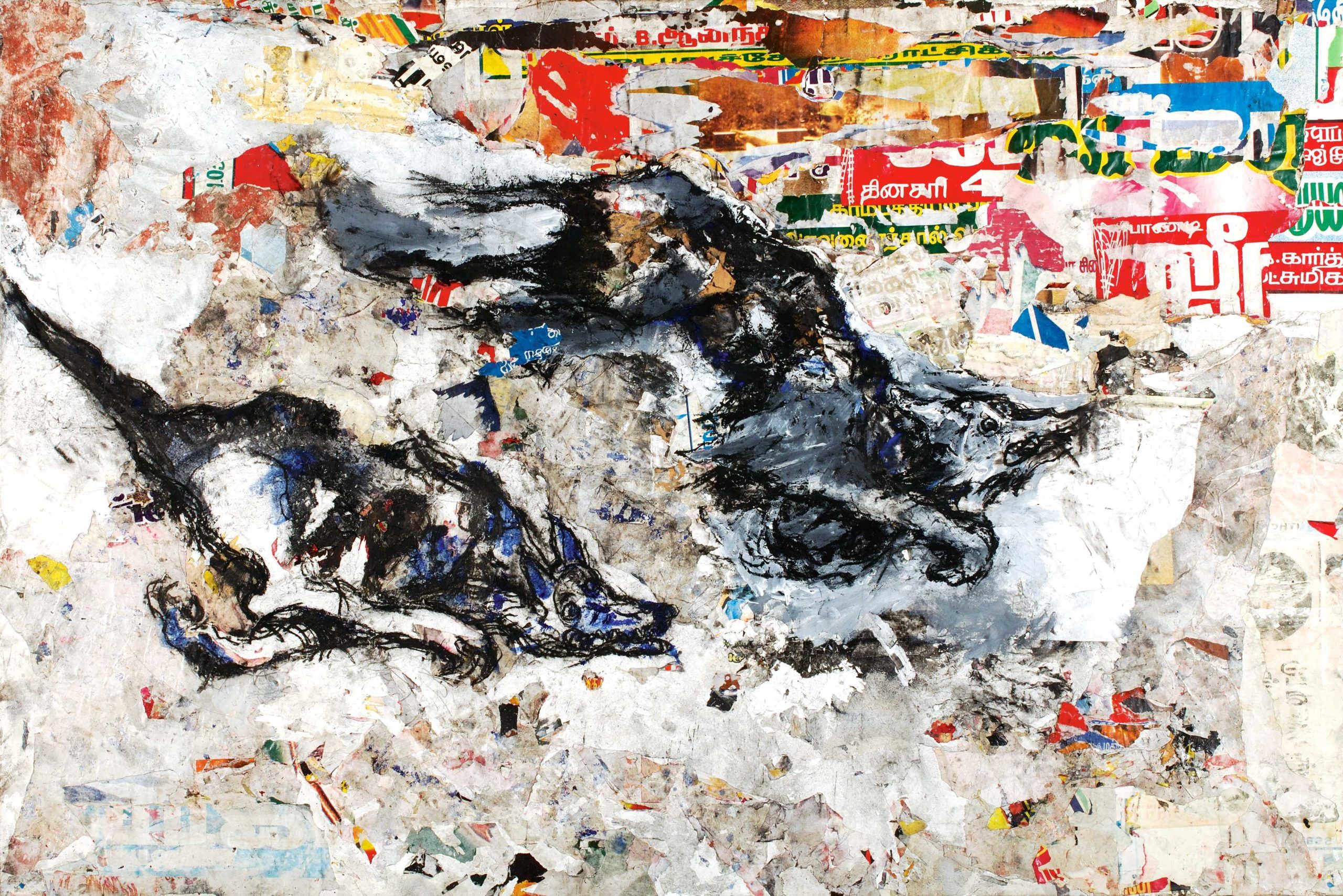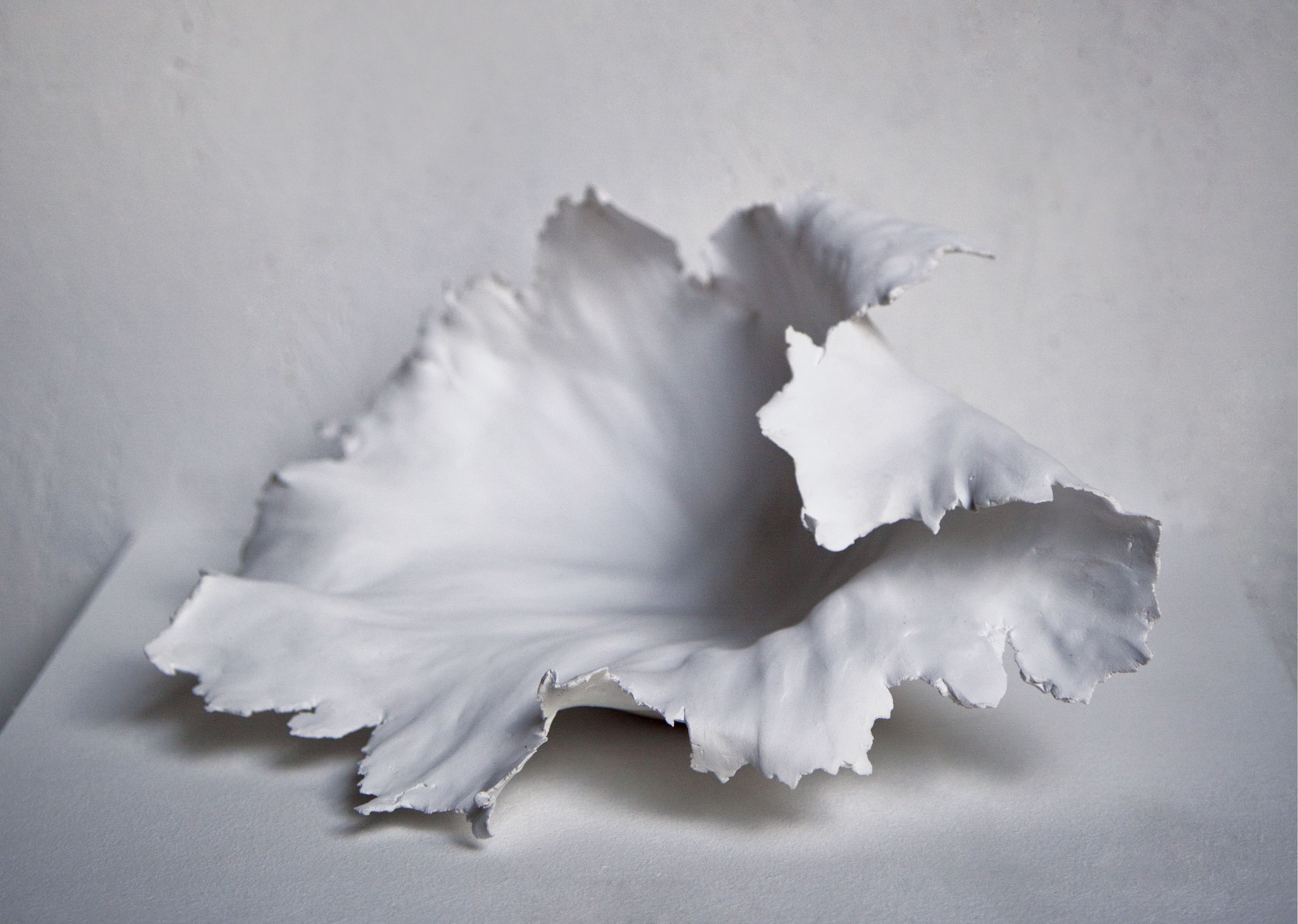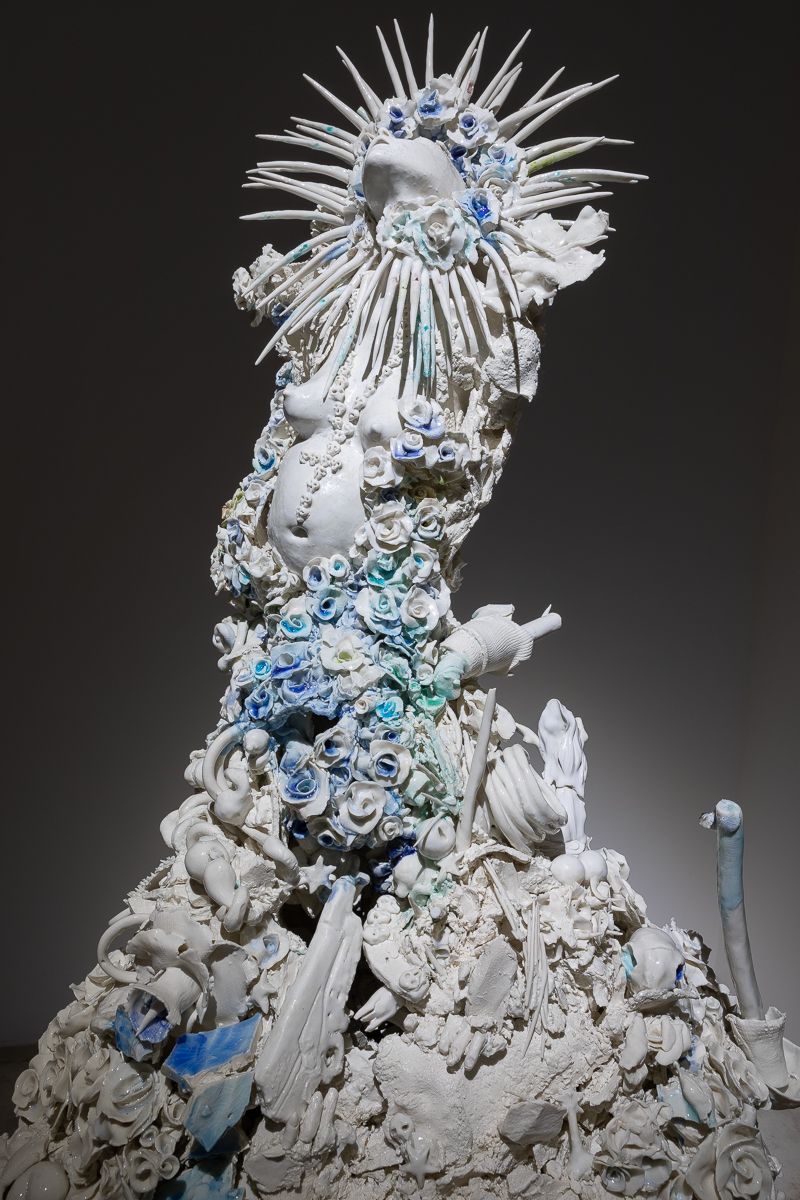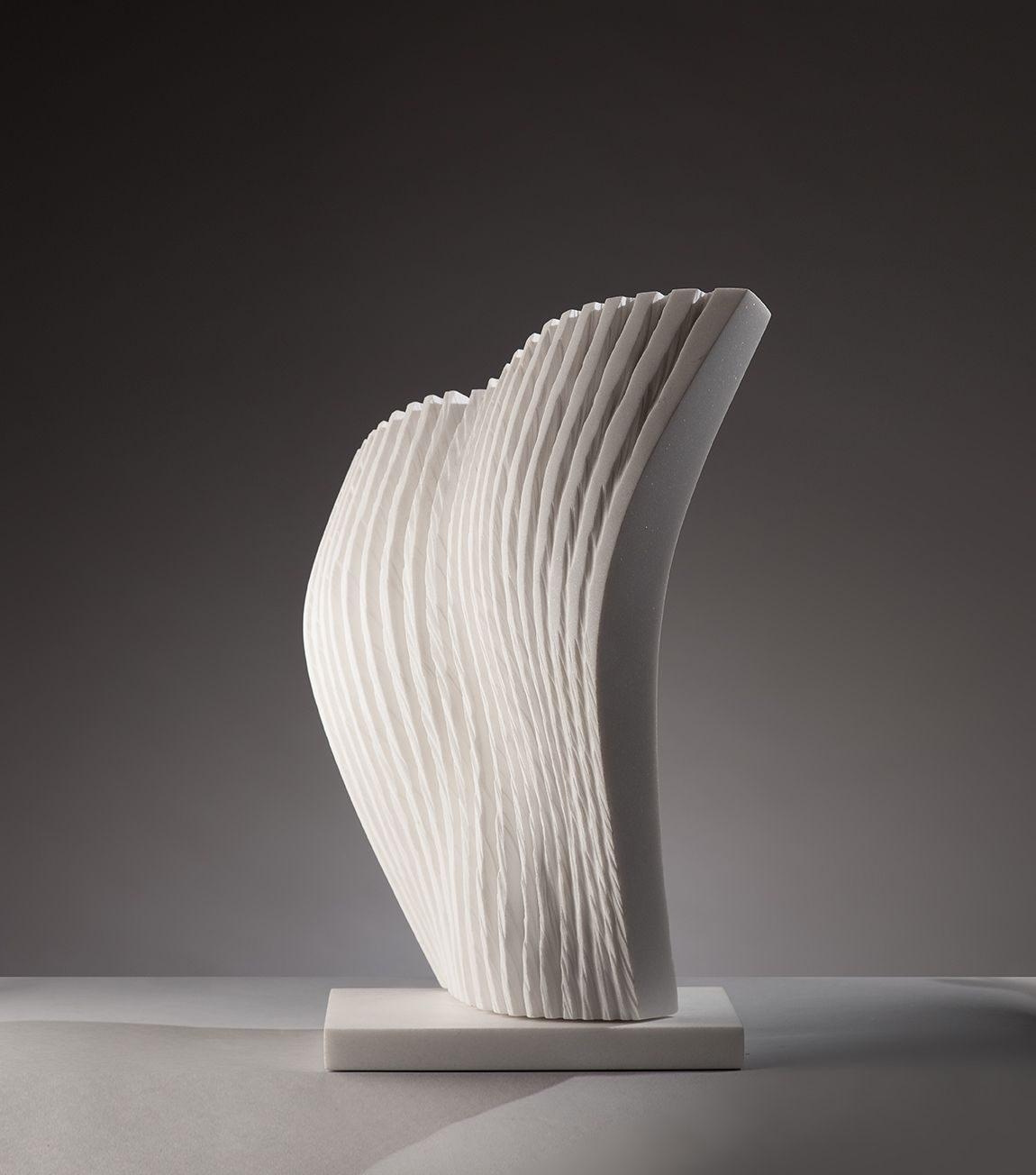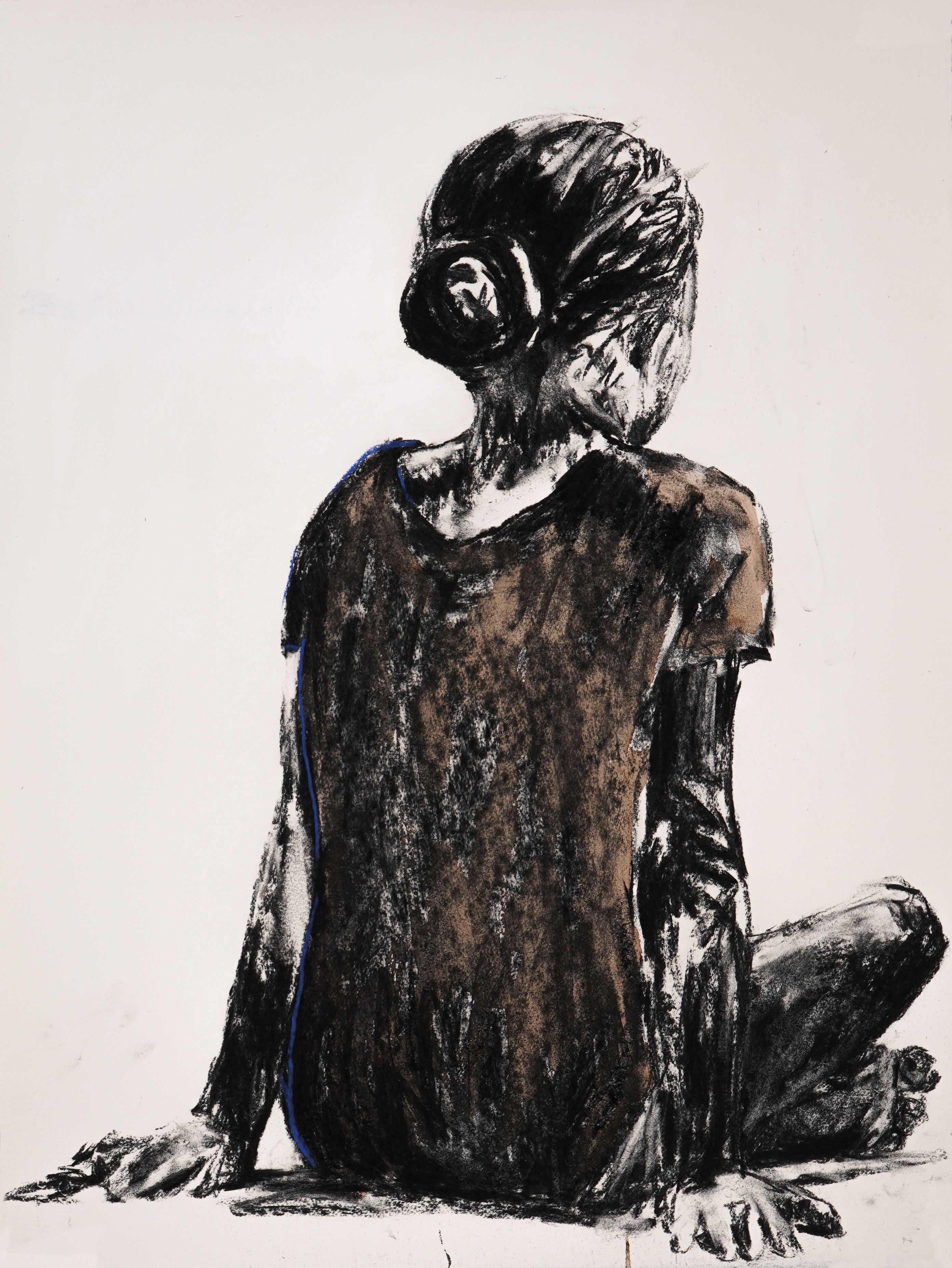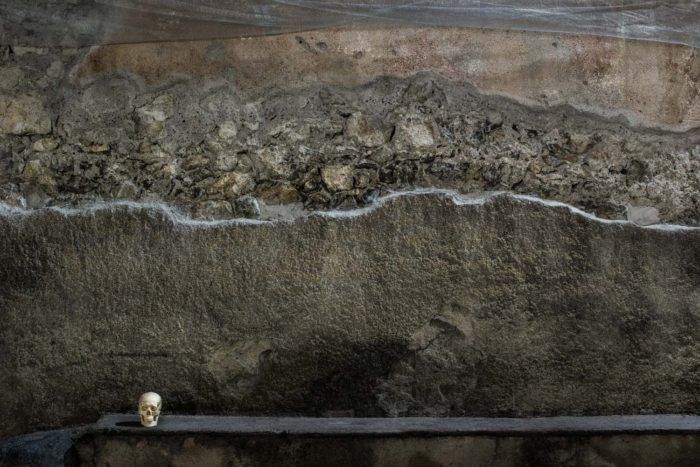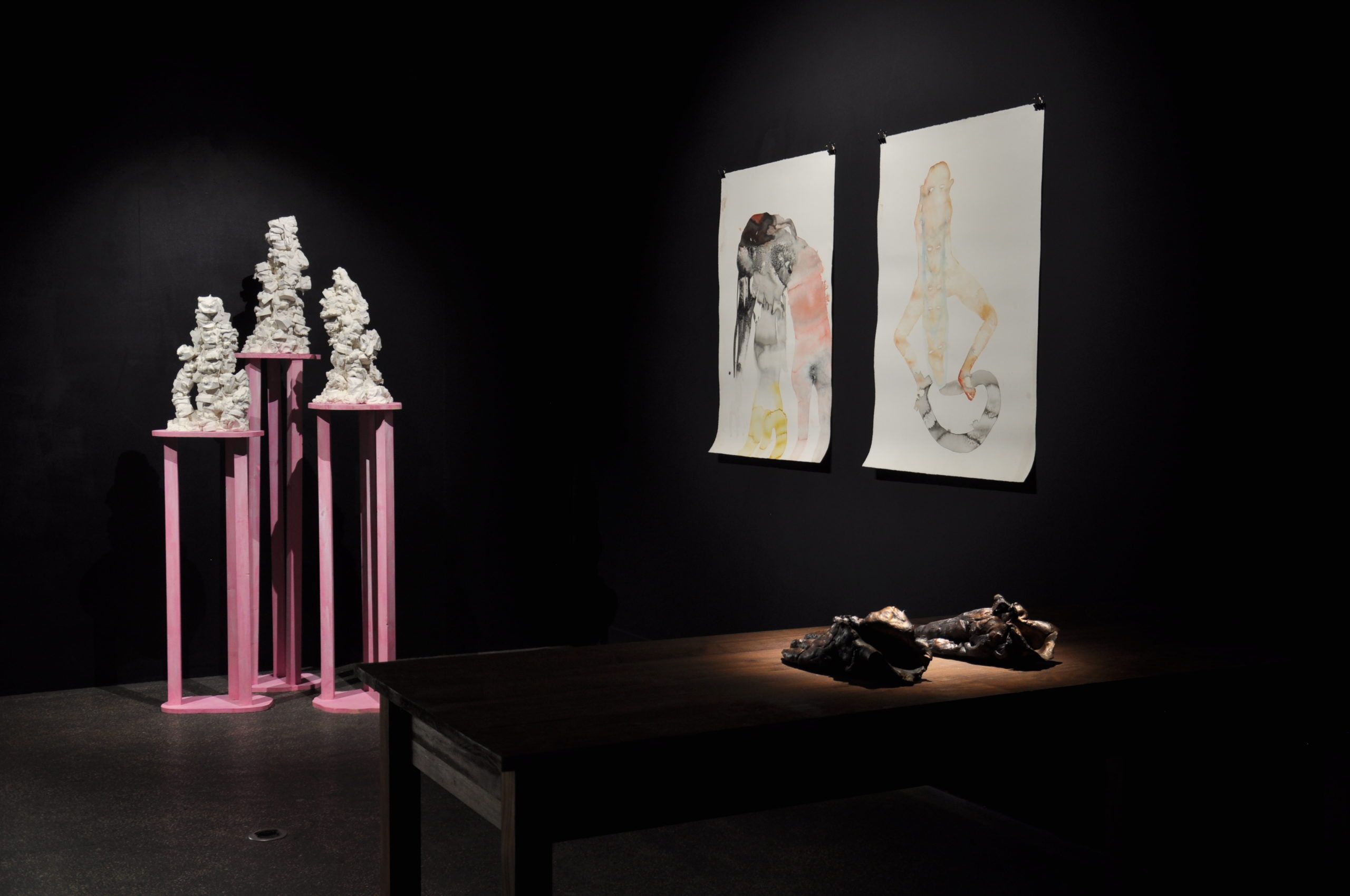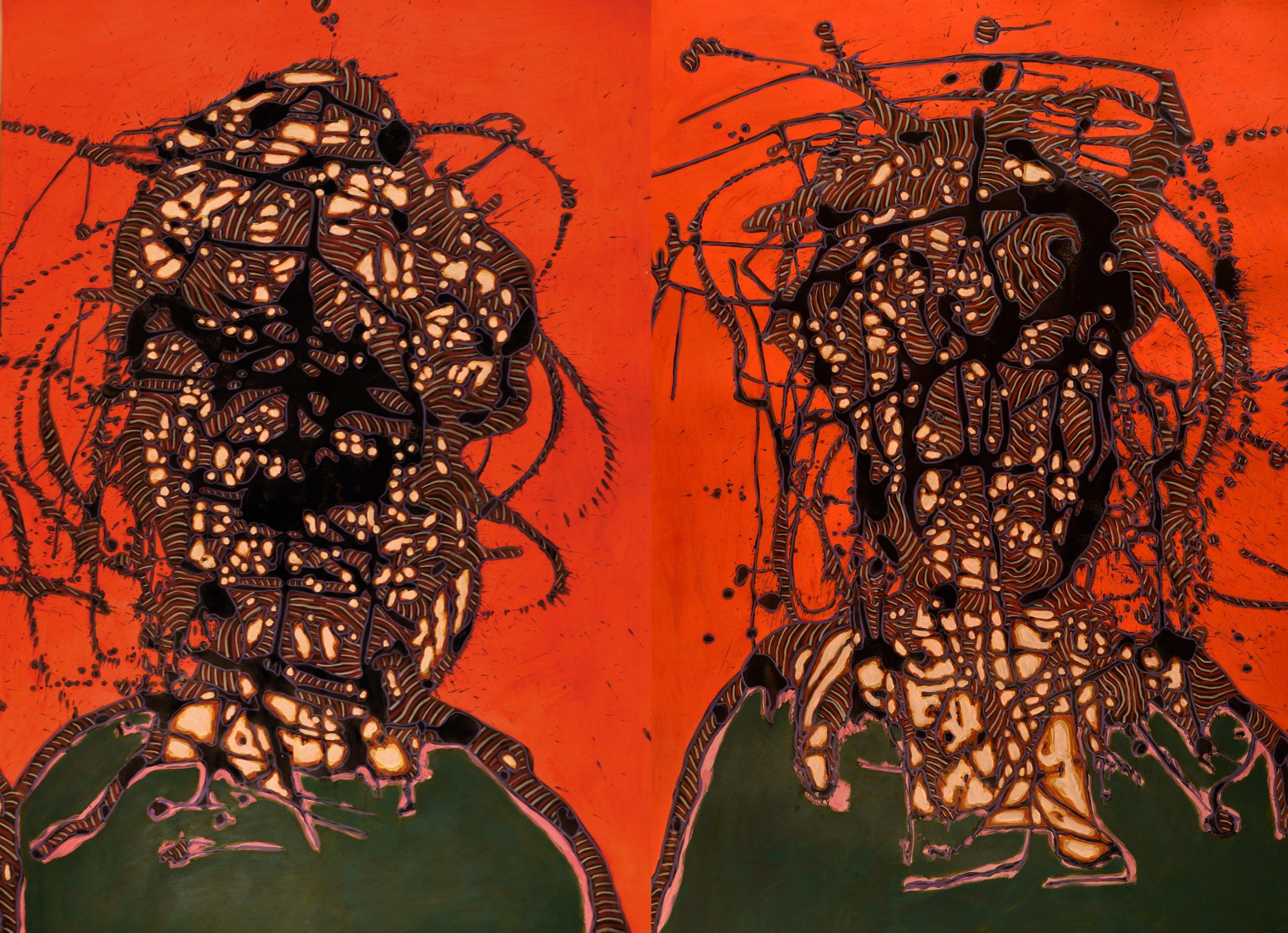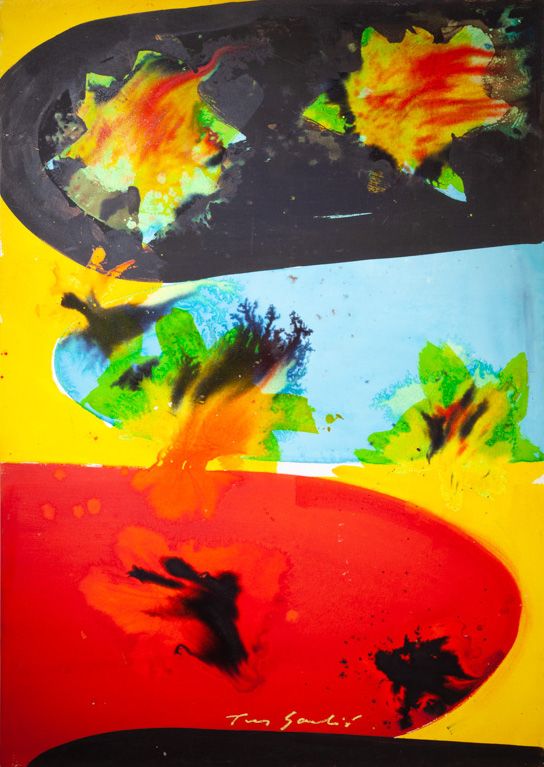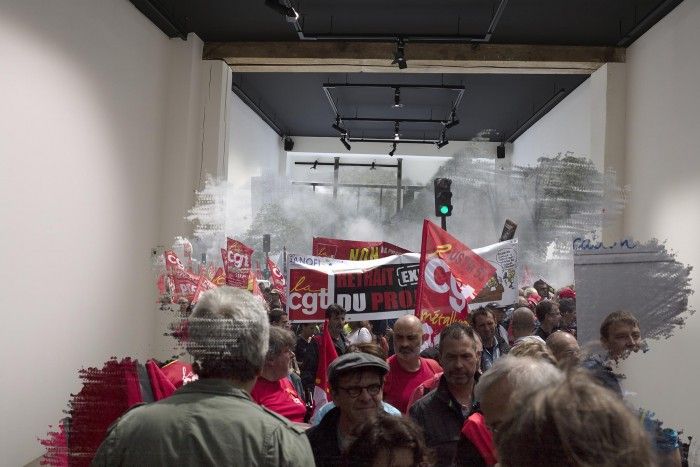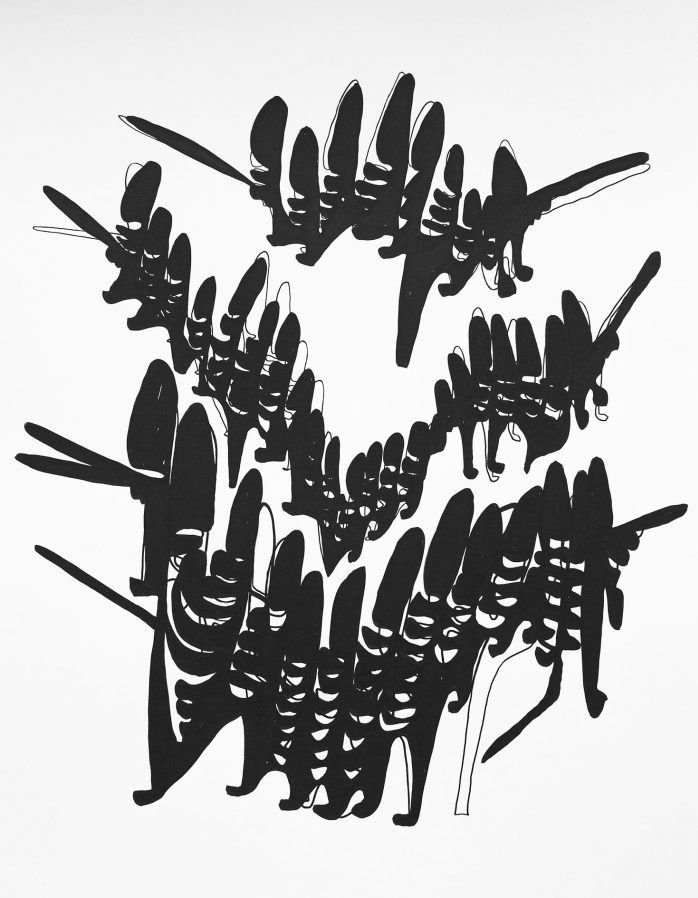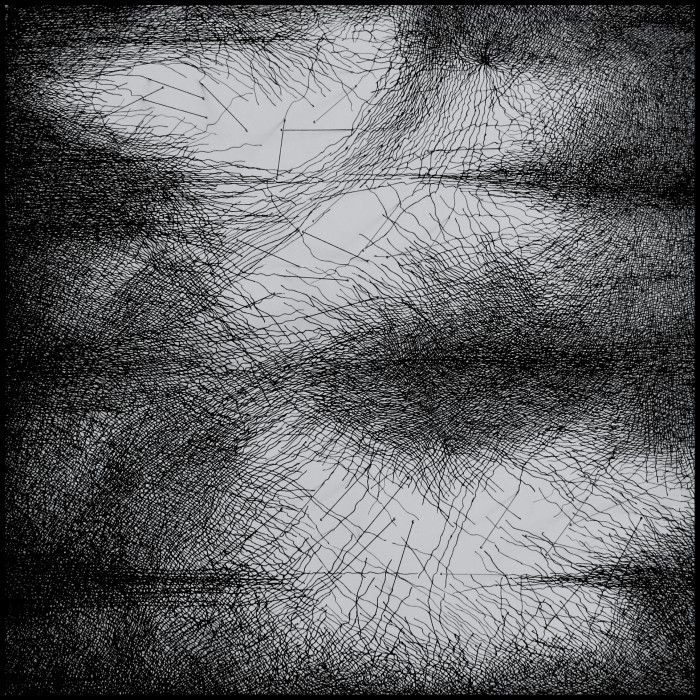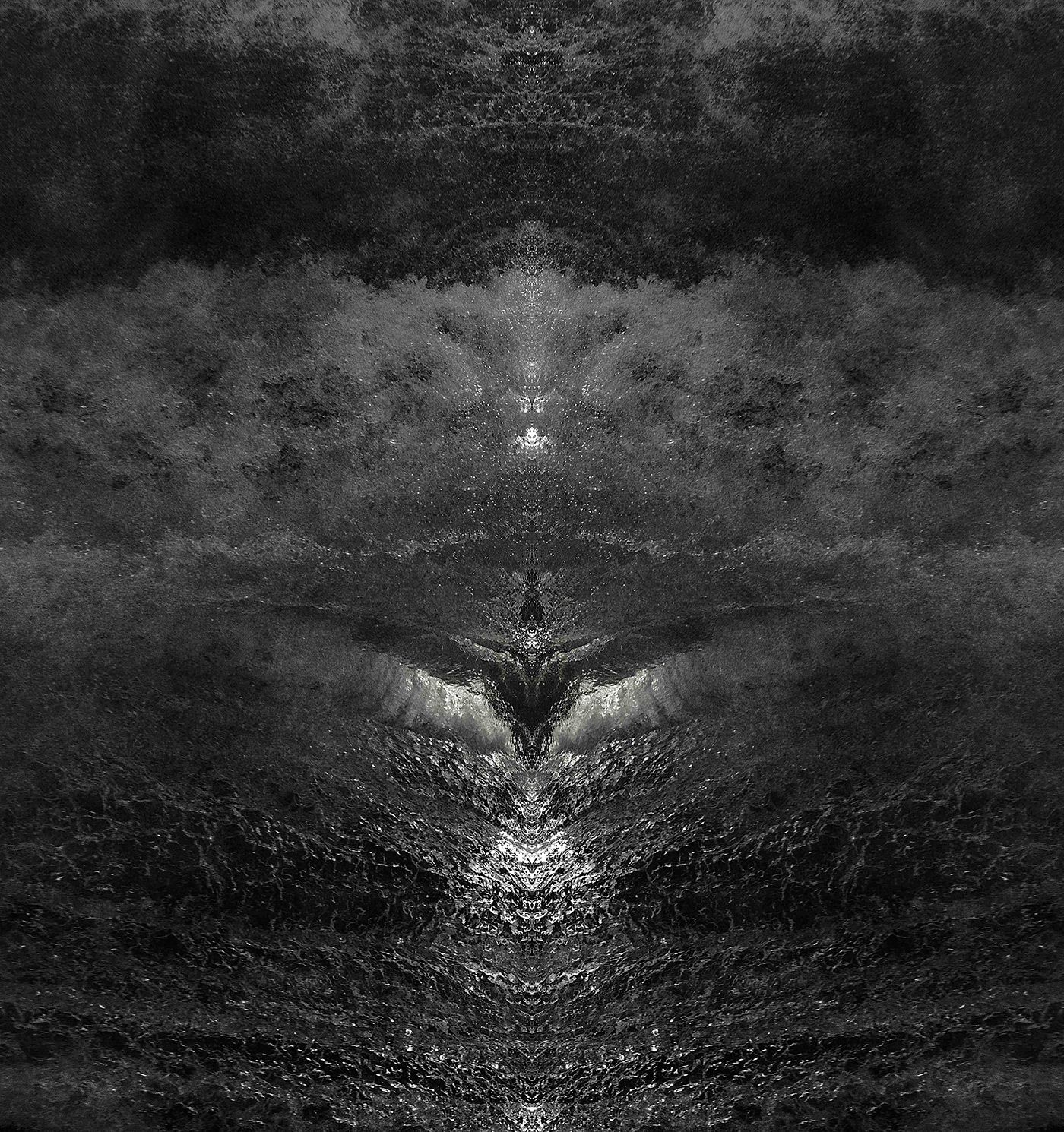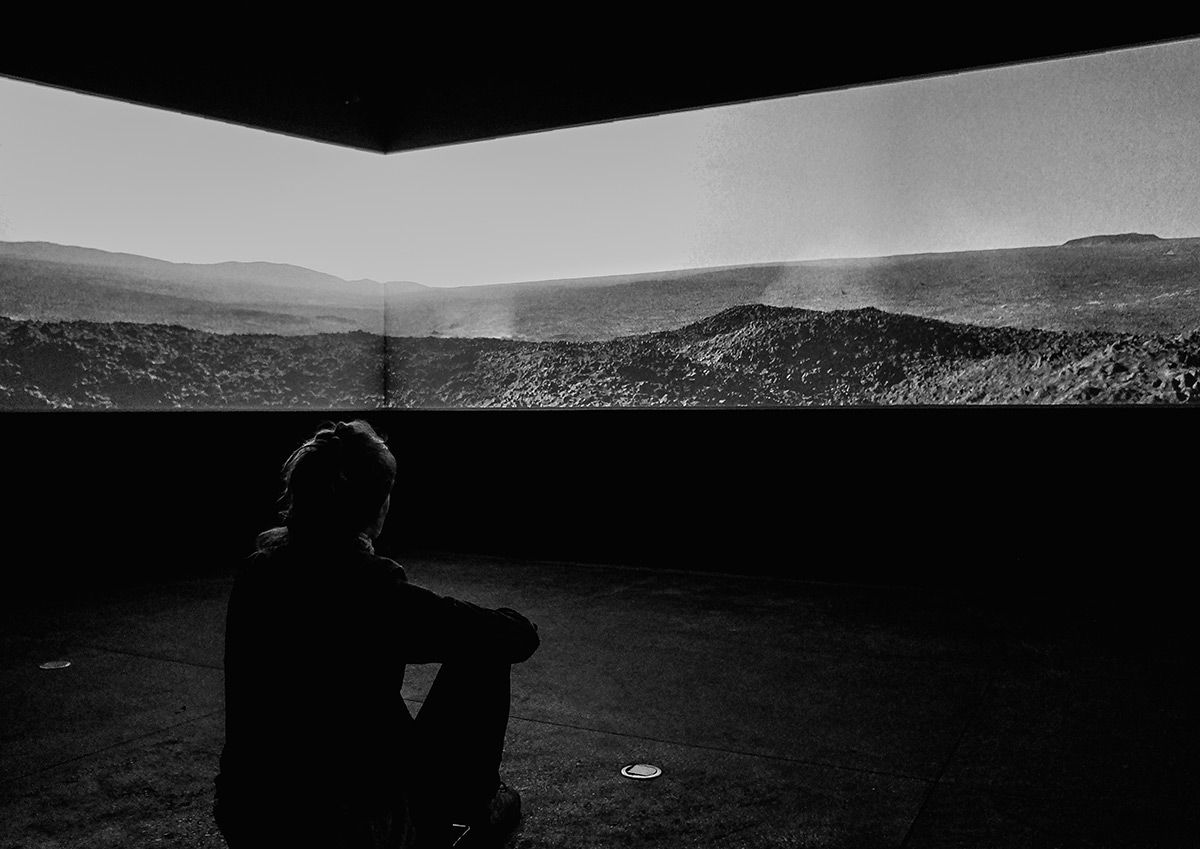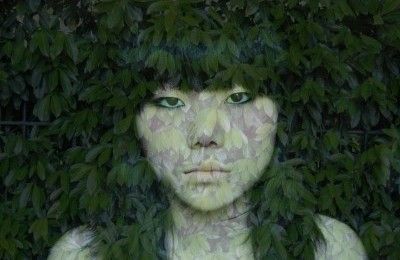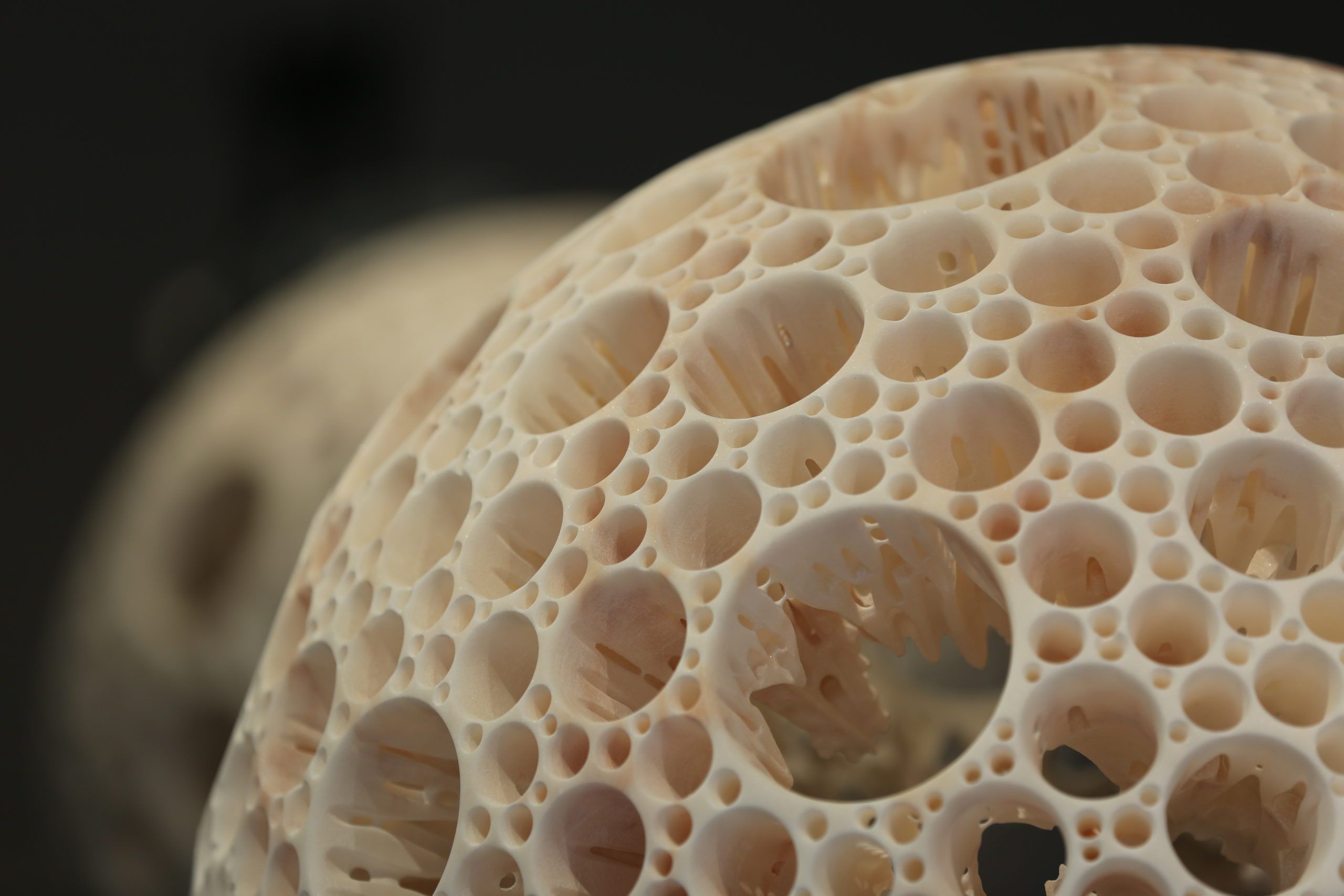TANC
Tanc was born in 1979 in Paris, where he currently lives and works.
What characterizes him is the uniqueness of his style, which becomes more easily understandable when we learn that Tanc grew up with graffiti. He believes that street art is ephemeral and that the action can be more important than the result. For him “to be an artist is a way of life”, therefore there must be total investment and absolute integrity. At the beginning of the 2000s, he focused on studio work and immediately distinguished himself from traditional graffiti artists through his work based on the line, researching synthesis. First using his name, then tags in general, then people, music, and finally, his favorite subject: life.
Essentially based on the line, his work is not aiming to be perfect, but spontaneous. The state he is in defines his density and rigor. His heartbeat activates his arm like a metronome, though he doesn’t try to control this flow but just to understand the composition that he makes appear in balance between the conscious and unconscious. He composes his music and his paintings in a similar way.
He is dense or light, rigorous or unstructured, but Tanc does not play; he lives his art. He signs his paintings with “Tanc” as he has signed walls with tags since his teenage hood. This discipline is first and foremost an instinctive outlet of his need for expression: he reappropriates himself urban spaces by shouting his name to the city with force.
Soon, the letters disappear and Tanc engages in exploring abstraction. By concentrating his work on lines and colors, he renews the classical pictorial research by confronting it with the primary vivacity of street art: preponderance of action, perfection of gesture, acceptance of chance and expression of a strong singularity. Above all, his works strikes with their intensity, their musicality, and the vibration of lights and materials. The action, energy, and emotion of the artist touches the spectator in a sensual, intimate, and immediate way.
Tanc has numerous group and solo exhibitions, notably in Germany (Skatlizers Contemporary Art), New York (Catherine Ahnell Gallery), England (The French Art Studio) and Morocco (David Bloch Gallery). He also participated in the Mois de la Francophonie at the French Institute of Beirut in 2013.
Though it may seem subjective, could you describe your path?
It started during my childhood when I discovered painting through different ways… One of them spoke to me, it was graffiti, and I decided to work with it. I started by painting abstract shapes, lines, colors, and effects… until I earned my place in the milieu by writing my name.
During the 2000’s, I started to have shows, along with the newly found passion of public for Street Art. I had recently graduated with a master’s degree in artistic direction, and I had to make a choice between living by reason or living my dreams… I chose my dreams. After meeting Jean Faucheur and the group focused on poster collages Une nuit, I gathered my VAO friends to invest a workshop at la forge in Belleville. Exhibitions followed at a regular pace, with first trips, residencies… I didn’t earn much money, but it seemed so easily earned in the face of the life I lead. I painted and I partied, everywhere and all the time. I wanted to live it all! Seven years have gone by, and I left with Atlas in a new workshop in the Lilas. It was a new era. I became braver, more serious, and more professional. The dream came true, I had to consider new goals. It was six years ago. Nowadays, I follow my path in the art world through exhibitions and encounters. It’s funny how the closer I get to my goal, the longer the road seems to be. Life is a performance!
Your work shows a peculiar interest for gesture, what influences are hidden behind this interest?
Even though my heart belongs to several types of artistic representations, I feel closer to Action painting and lyric abstraction. In my opinion, the emotion that its practice provokes has no equal. Within it, gesture prevails and is singular. It is, even in a well-established scheme, the human touch, painter’s transmission to the viewer through the ages. Eternally frozen instants. It’s this intimacy I crave in the gesture.
For you, action mostly prevails on result, at which step of your creation do you chose to focus on one or another?
Action prevailing on result became a philosophy to me. It’s the beginning of my production. I think that too much knowledge and reflecting on Art history and too much thinking to find a new concept to get along the institutional art in France (contemporary art) parts in a reflection that is rarely constructive. I am a conceptual painter, but the relationship to material is primary to me. I do not agree that the idea is enough to be an artist and that production is solely craftsmanship. Action is concrete. It does not play, crumbles dreams and brings maturity.
Result is determined more like an adequacy between the idea I have of the used tool and its final production. I will still find enjoyment during the action in finding little hazards that will give the result’s prestige. Furthermore, it will be praised and hated, sometimes by the same people at the same time. The “beautiful” being bygone in contemporary art, tastes evolve through concepts and processes. Mine being to privilege unconscious in my creation. I prefer to think to the result before and after the action.
First lettering, you then went towards more abstraction, was it the logical follow-up of your approach?
My research, since I’ve been working in studio, goes towards abstraction, I find more emotion. In the street, it’s different. Letters impact has another meaning. But boarders remain blurry for me. When does a letter become an abstract form? This is where I play to find limits by integrating new inspirations from my travels. Going back on my traits, scraping the canvas, creating volume, deepness and pictural vibrance.
It is important to remember that my approach is to paint with my unconscious expressing itself. Kind of a state between trance and meditation, like a therapy to me (a bit like Sam Francis sometimes ago).
The more I give up to spontaneity, the more I let myself go, the more well-executed the painting will be (beautiful). Self-confidence is key. Like the calligrapher, I repeated my gesture, I must be sure, not think. Only appreciate hazards of the shapes appearing.
Does experience influences your work? how does it feed your creation and reflects in your works?
Experience influences my work through my being, intellectually today, physically tomorrow. I think about Hans Hartung that I love. Self-confidence comes with time. Sensations brought to me by life often had impacts on my painting. I think again of breaks up that were interesting and useful in a pictural point of view. I like my painting to reflect my life. My Variations serve is the perfect example. One trait with a single gesture summarizes my emotional state by filling the canvas. Like an electrocardiogram of the lived moment during the action.
Which artists have been of major importance to you in your artistic research or caught your eye recently?
I started to want to paint by discovering graffiti and artists like Dondi and Futura 200. Then, I got interested into Art History and Abstract Expressionism and New York School. From Franz Kline’s action painting to Mark Rothko’s fulness. It was done, my art would come out of these two movements. Following this, artists like Bernard Frise, Simon Hentaï, Henri Michaux or Christopher Wool inspired me. For the past 4 years, I’m also fond of Korean painting, Dansaekhwa with artists such as Park Seobo, Chung Chang Sup, Lee Seung Jim, Lee Bae…
I also have an eye on the future and follow a lot what my generation does. Artists like KR, Pablo Tomec, Erosi, Revok. There’s so many of them…
We often talk about your synthesis; can you tell us more about it?
I started working on tags synthesis, or rather their energy. I wanted to transcript without reproducing canvas already done in the 80’s.
Through this, I realized that I could synthesis lights, emotions, frequencies surrounding me with traits and colors.
Synthesis pushed me towards minimalism, then towards maximalism (reproduction of the same pattern on a whole format).
Do you think that collaboration between artists plays an important role in your practice? (You share your studio with Atlas, but also in the world of street art, crew, etc.)
Collaboration between artists is important on a morality pov. We often feel isolated, tormented to know if our art is raising and will raise enough enthusiasm for it to be conserved and restored. In this way, it is necessary to discuss on our thoughts and to celebrate our successes. Being recognized by our equals and colleagues is more important to me than a few sold paintings.
About creating artworks with others, I am quite skeptical…Except for some projects with Steph Cop for the 2016 Marrakech Biennial or Atlas with whom we share our reviews to create four-handed paintings. It is often difficult to share instead of competition. Artists have strong egos, it’s not always easy to deal with…
You are often linked with the Graffuturism movement, do you think you belong to it?
I really don’t consider myself in any movement, future will do its thing…
I believed in the beginning in Graffuturism because I thought that Street Art (that is originally a 20-persons group in the world) had become a niche where we put everything and anything.
Unfortunately, it quickly became the same. Basically, these movements which come from artists stemming from the graffiti having had a reflection to lead on a new form of art are polluted every time by pushy artists. No background.
Do you set limits for yourself in the use of mediums?
I have only their mastery as limits.
As an autodidact, I tested a lot of things. Often with success, sometimes with failures, often with time. That lead me to their utility. Nowadays, I still do research but do not hesitate to call a specialist to learn. It is important to know our abilities. Use’s orientation of a tool and the importance of being assisted or not. I started to paint with spray cans 20 years ago et it remains, by far, my tool of choice. It is an extension of me. Painting without touching the medium, it’s an unmatched feeling for me.
How do you see the institutionalization of artistic practices (or yours even more) in urban field?
I am in favor of artistic practices recognition by institutions, museums as much as in the public space. But I am also a defender of wild action, often illegal ones. The risks taken and the speed of execution give a more romantic touch, to my liking. You do not forget that I privilege action over result. In cities, people need to evade, art is a really good way to do so. I think of the happiness I have to walk past graffities since I’m a child. It changed my life.
Institutions follow today with the Art market. With the speculative rise provoked by Street art, we expect to see a lot more of it. It was already showed in the Grand Palais, at the Palais de Tokyo and at the Pompidou Center…
It’s the path of every practice and every artist. Then, it’s all cycles. There will always be young people who will emerge and break all the established boarders for art not to be institutional. Art is generational, everybody has theirs.
The idea of the vandal spraying a tag, is it still the case, or is it more of an imaginary attached to this practice?
You can’t cheat with paint and even less with tag. It’s easy to know who does what, you just have to get out on the street. So, no! There is nothing imaginary. I’m far from being an addict than some people or even younger people. Illegally writing your name brought me where I am, and I want to remain sincere with my approach (I’m not talking about the pleasure I have from doing it).
Truth is that it brings a strength to my studio work that I lose if I don’t come back.
You are also a musician, does all of this it has a common point in your creation, or can you tell us more about it?
I was always mesmerized by music! It’s the easiest art to appreciate, no need to intellectualize. We can feel it physically. Everybody will give you an opinion on a piece or on a musical genre…But, playing as an autodidact is quite difficult. I had to find the right instruments to practice by myself. During the early 2000’s, music was mainly produced by computer. Weary of having worked with it too much during graphism studies, I look for different options in the Pigalle music shops. I decided to buy a first machine (sequencer, drum machine, synthesizer). I am fascinated to work on live music. To feel the electricity becoming frequency, ripple, note…Without knowing it, this research is influencing my painting in my search for abstraction and completing my character. I will then not stop to work simultaneously on both subjects. I often say that my arm is actioned by my heart like a huge metronome transcribing my emotions. I paint my internal music.
What are your ongoing projects or collaborations, exhibitions, new works to come?
I am still working on several series of paintings, some will be visible soon, some others in a few years.
To see some, it is currently at the Loo & Lou Gallery in Paris, then starting from the 18th of January with Atlas at the COX Gallery in Bordeaux. In February, at the Brugier Rigail Gallery for a collective exhibition and during spring in Germany for the Urban art Biennial.
For collaborations, the Olivade fabrics will drop three patterns of my creation and I have ongoing projects of parquet and carpet editions.
Several books, lithographs and serigraphs are also ongoing.
Do you have a place where you would like to exhibit/ work?
I feel really close to Asia even though I already exhibited and worked there, I think it is where my heart would guide me currently. Otherwise, New York and Paris remain the best places to catch up with trends and to try to insert yourself in the artistic world.
What is art for you (starting with: “to me, art is…)?
To me, art is the possibility to transform actions and materials in reflection. To question and federate people on the world that surrounds us. Art is a religion nowadays, and big shows are masses where everybody rushes to, looking for answers and mysticism.
But to me who’s in the action, it’s above all a balance and a therapy. My reason to live.








